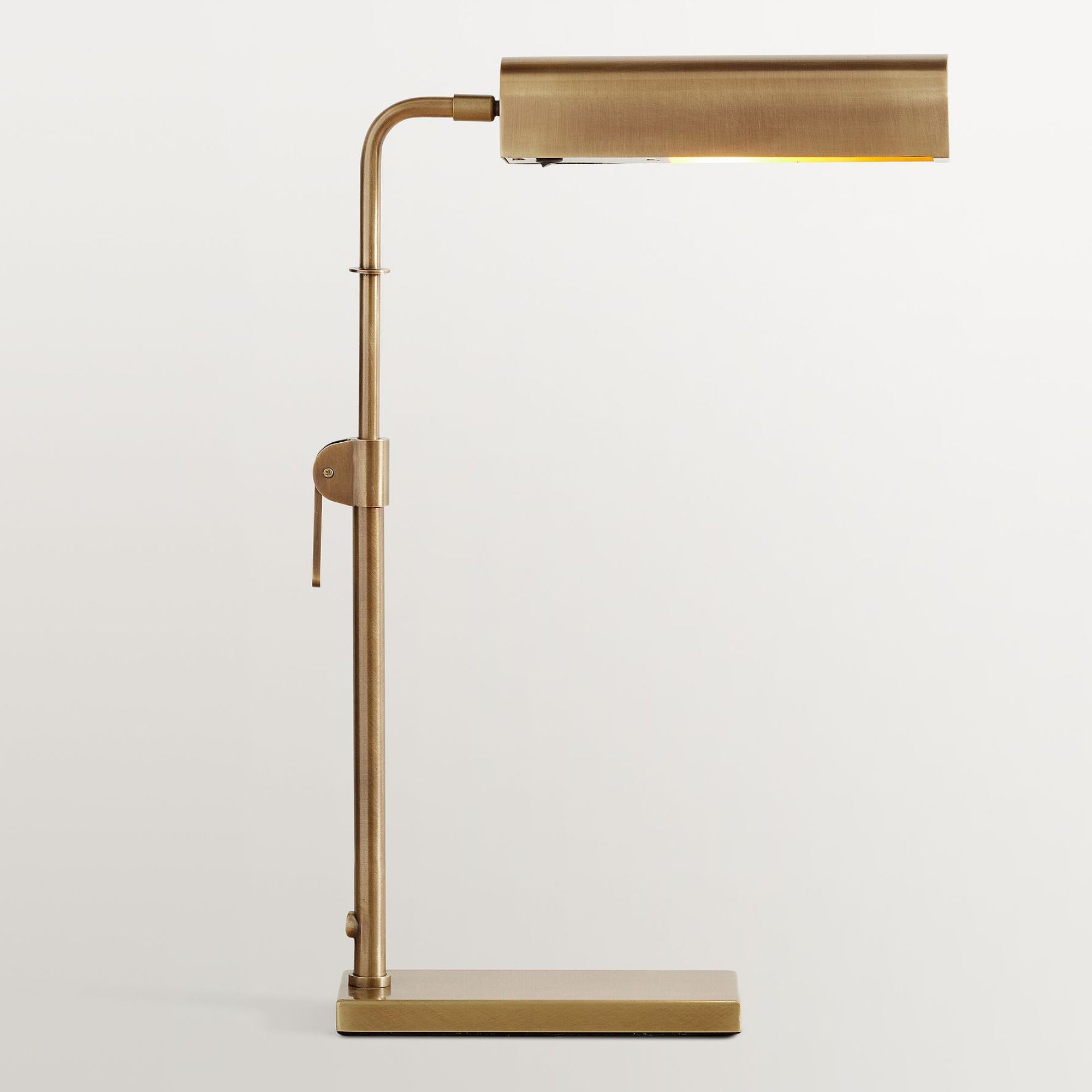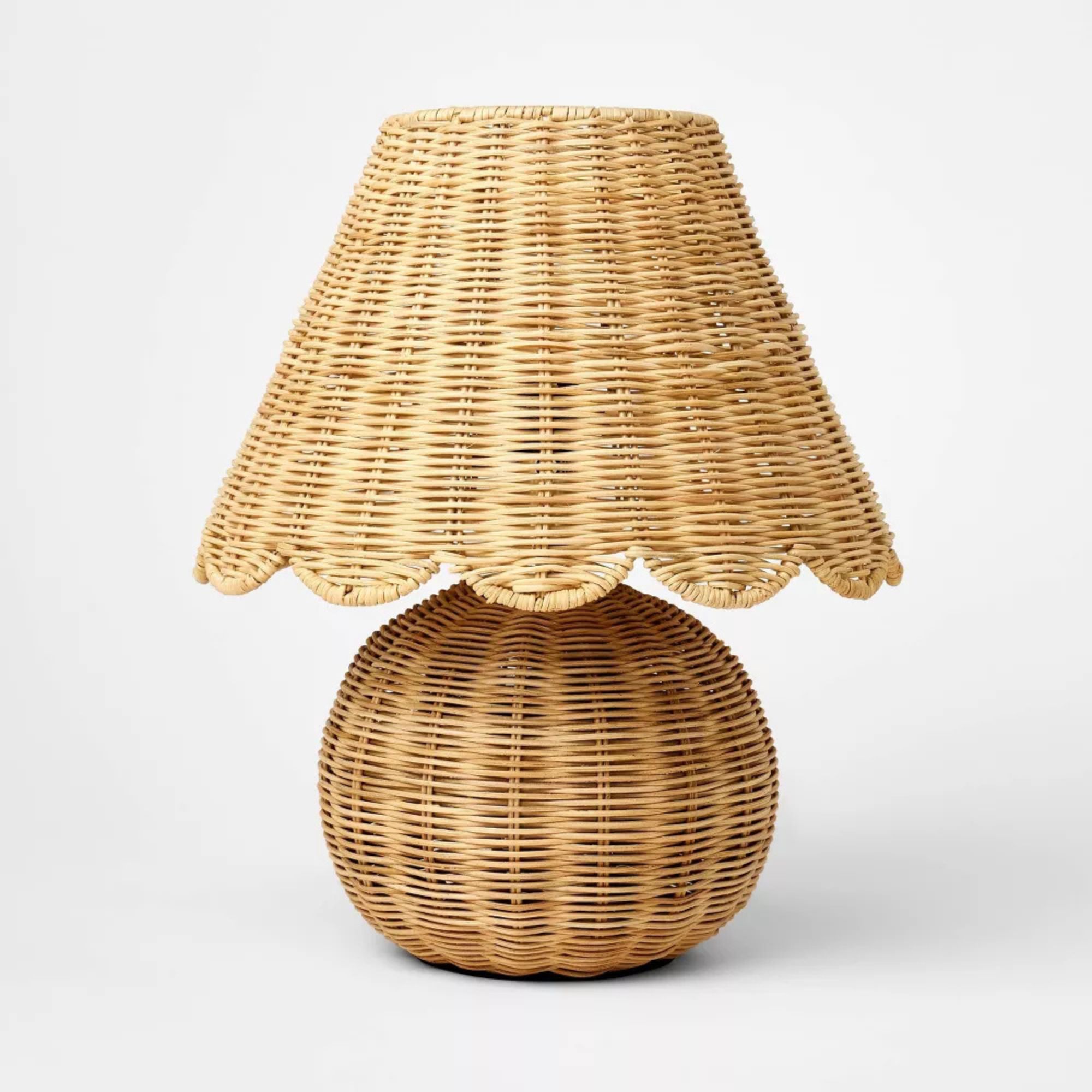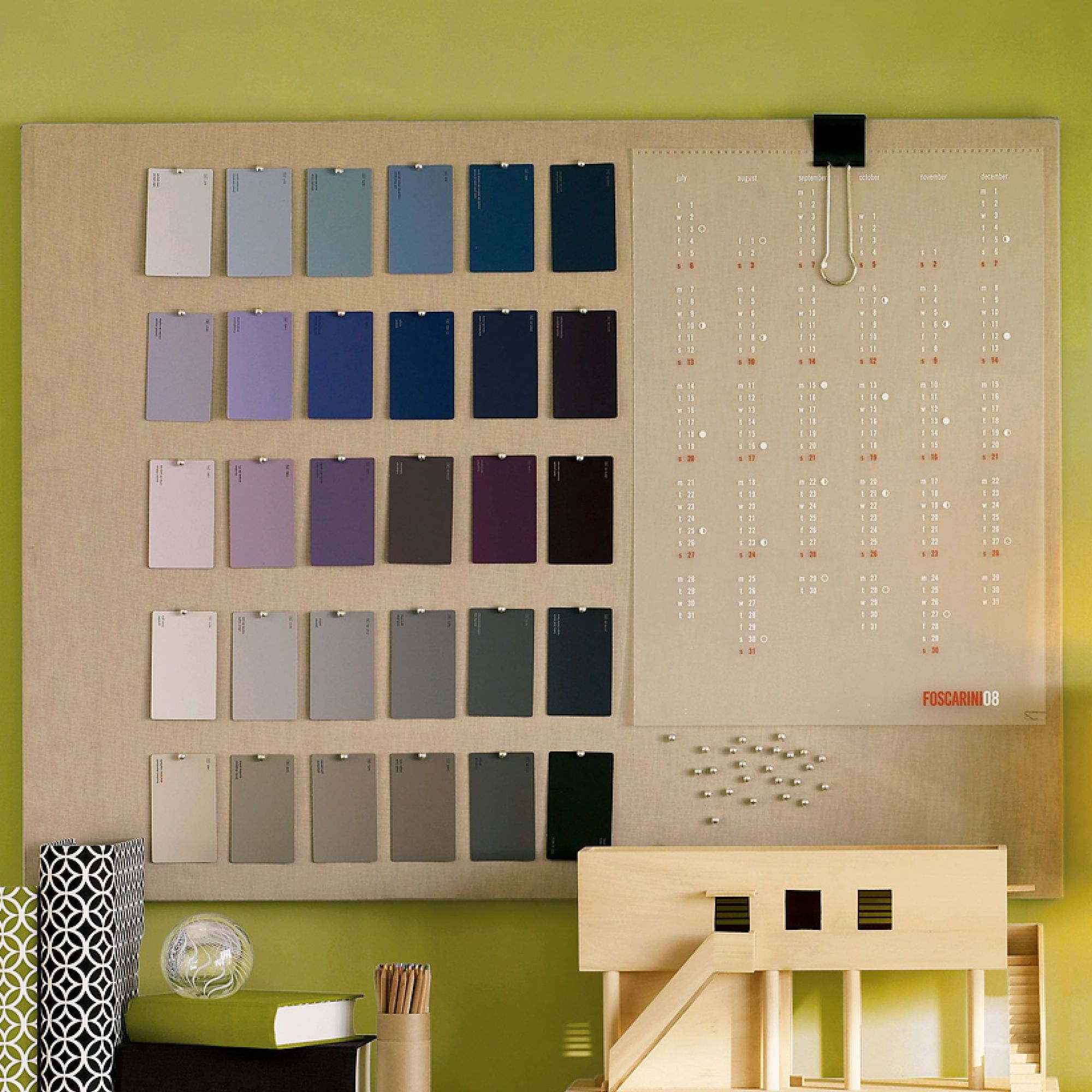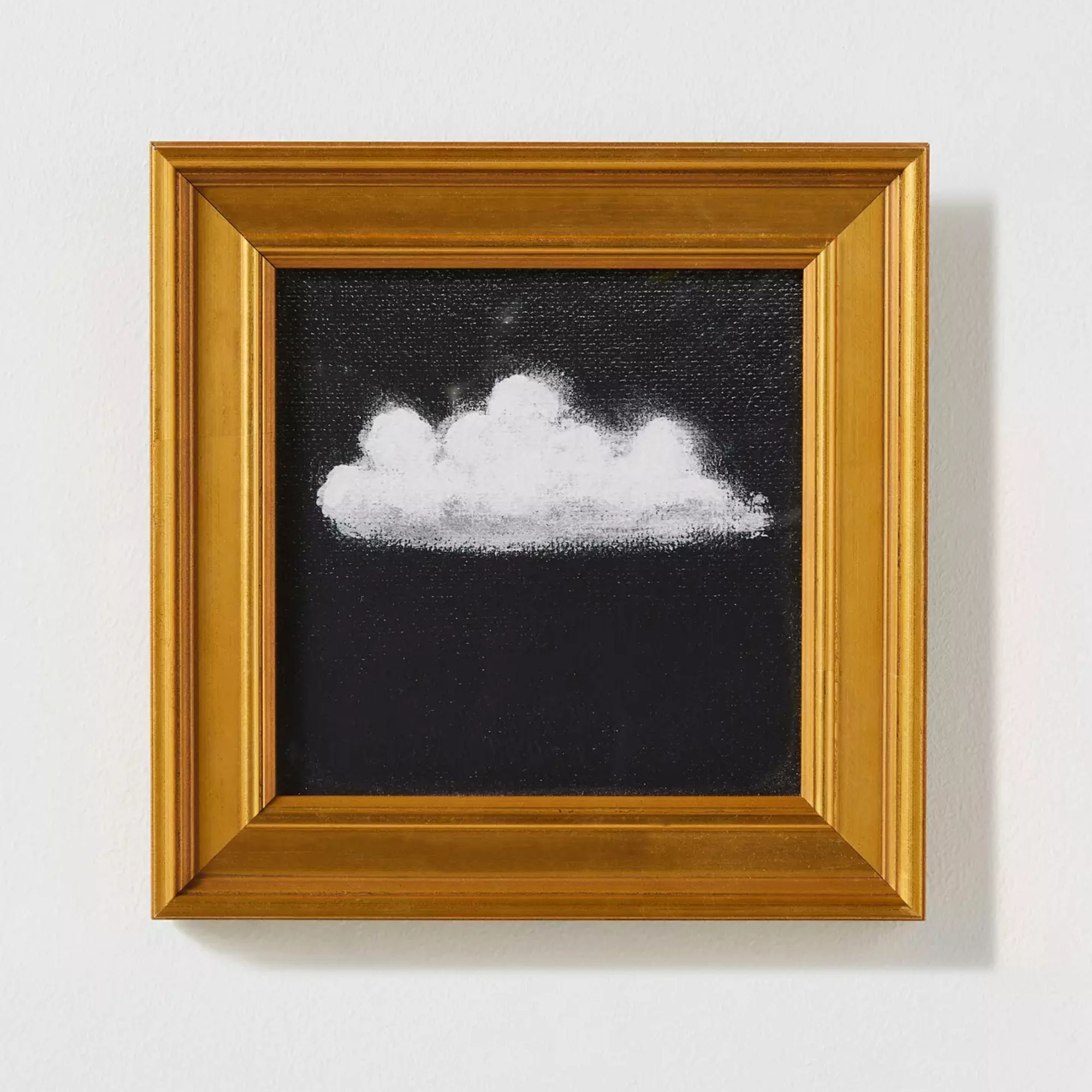Home office ideas – 22 of the best ways to design a home workspace suggested by interior design experts
Designing a practical yet inspiring work-from-home space has never been easier with these inspired ideas put together by interior designers
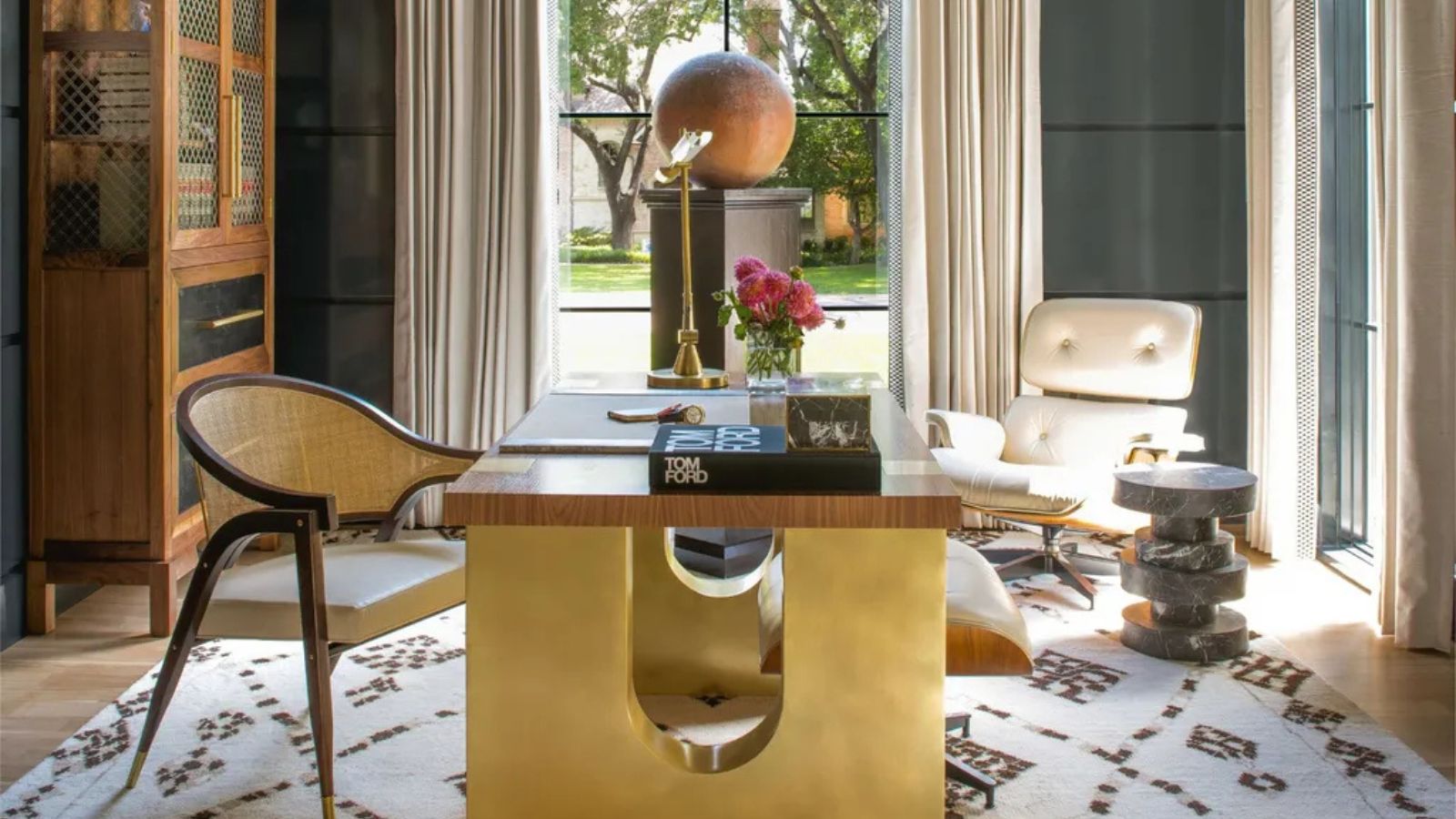
- 1. Nail the basics
- 2. Be nifty with any spare space
- 3. Pick a focal decor piece
- 4. Always consider lighting
- 5. Consider plenty of storage and cabinetry
- 6. Make a home office multi-functional
- 7. Create a wall of shelves for chic storage
- 8. Prioritize natural light
- 9. Combine the office and the bedroom
- 10. Make sure the area still feel comfortable
- 11. Adopt a calming color palette
- 12. Incorporate a statement wallpaper or mural
- 13. Don't be afraid to riff from your usual style
- 14. Nail the wall decor
- 15. Bring in antiques for a characterful feel
- 16. Always incorporate greenery
- 17. Reflect your personality or interests
- 18. Go bold and color drench
- 19. Give your windows a lick of paint
- 20. Match upholstery fabrics with wallpaper
- 21. Display meaningful objects
- 22. Mix old and new for a characterful yet practical space

Jennifer Ebert
The key to home office ideas is balancing practicality with style. It's essential to feel uplifted in your at-home work space, but you should also prioritize functionality by considering the basics.
Ensure ample storage, sturdy furniture, and plenty of light – these are the basics. Then you can have fun with the space and ensure it feels like yours, treat it like your living room, or your bedroom, you want this space to feel decidedly different from traditional offices that are often void of personality and warmth.
Whether you work from home full-time or just need a serene spot to focus a few days a week, these designer-approved home office ideas will suit all decor styles and spaces both small and large.
1. Nail the basics
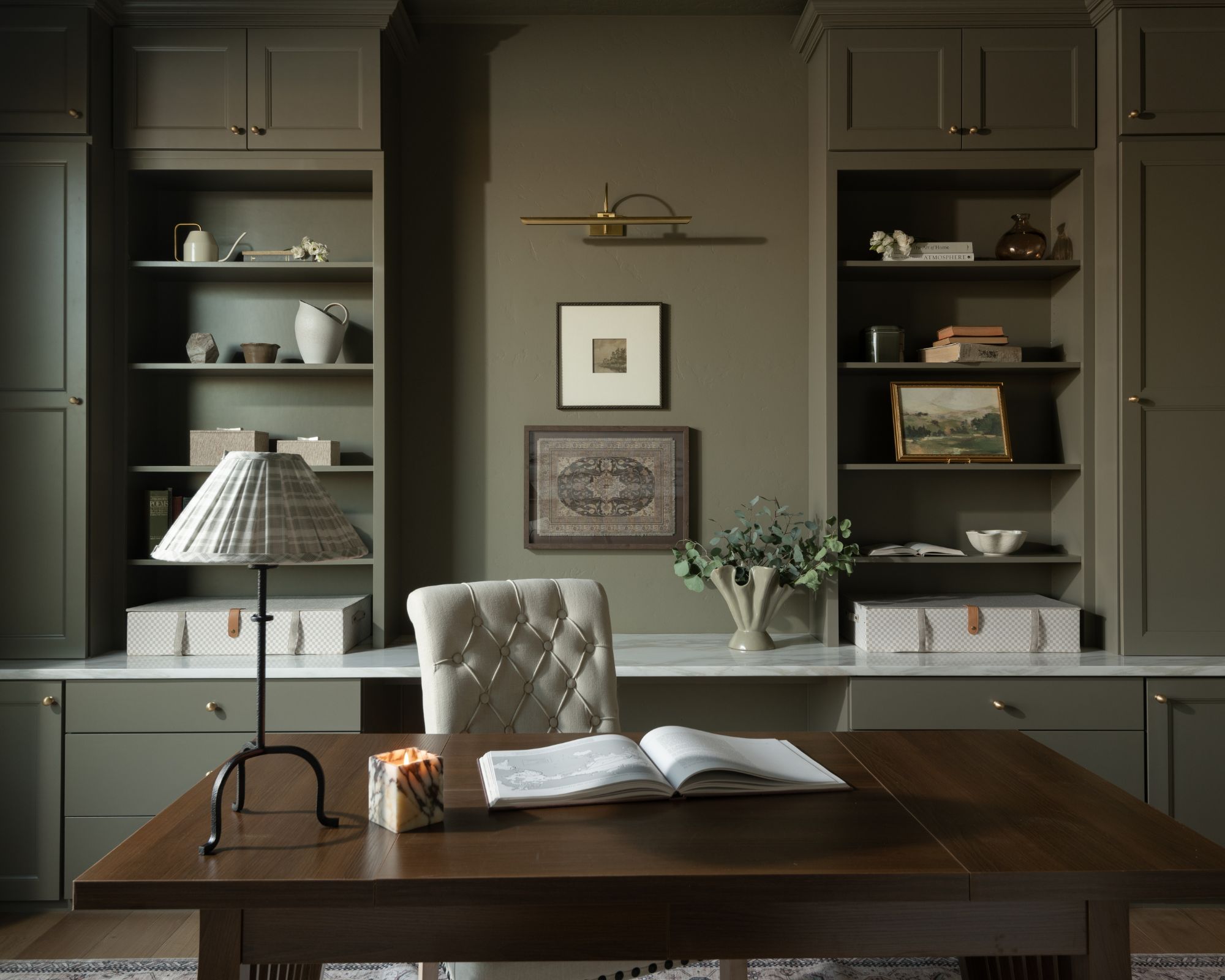
Although decoration is important, the most vital part of a successful home office design is meeting practical purposes. Comfort and functionality are the two key points to consider when designing as you're unlikely to achieve high-quality work in the wrong environment.
'I usually start with the desk, because that is the most functionally critical element and then once we nail that, I layer the pieces that work with the desk-style.' says Leigh Jendrusina, founder of Salthouse Collective.
Nailing the height of your desk and chair is the first step that instantly springs to mind as it's crucial you can reach your computer and sit comfortably while working. Home office seating ideas are useful too, from a plushy seat pillow to an upholstered armchair, there are many ways to level up your furniture choices.
2. Be nifty with any spare space
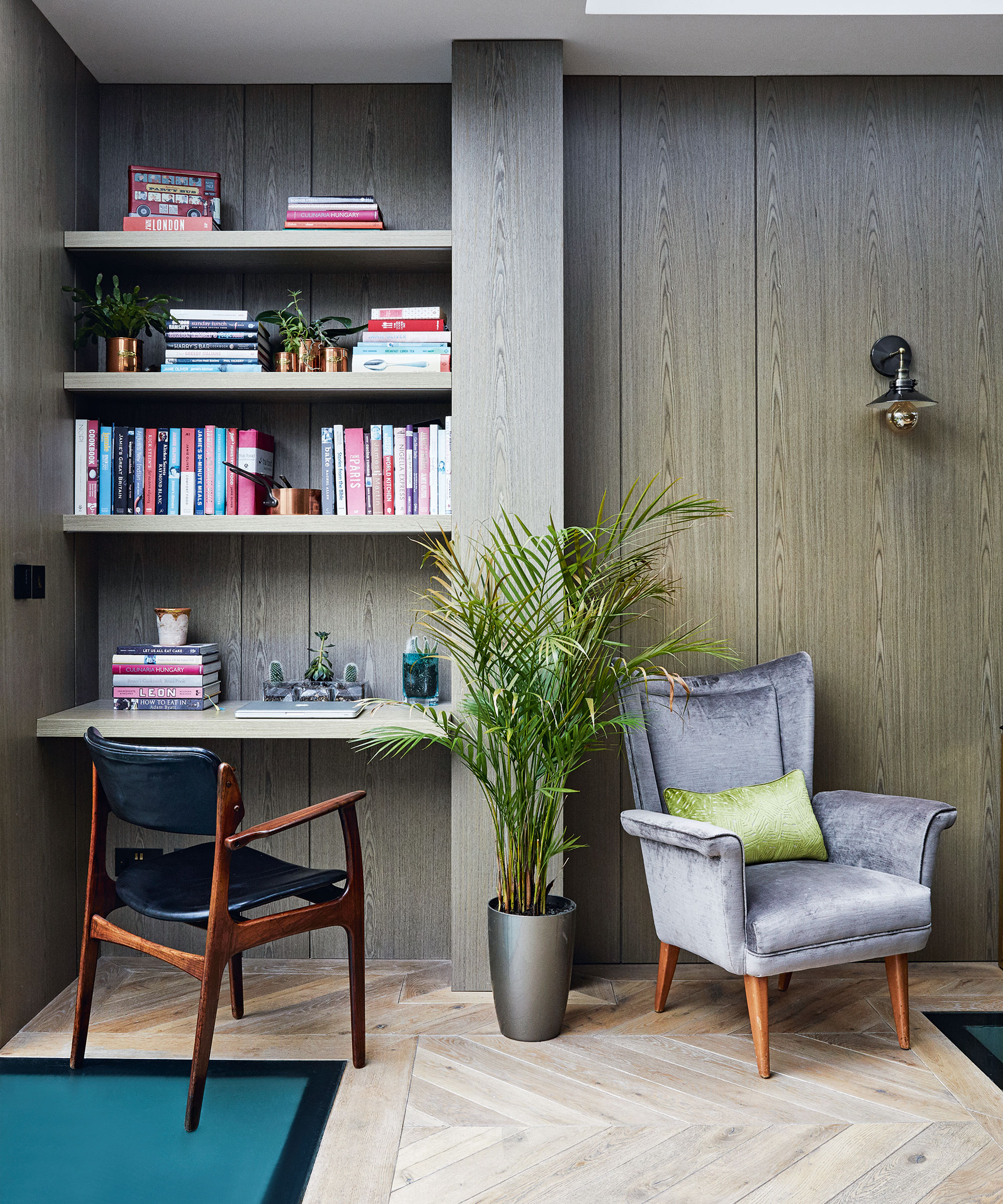
One of our key home office design tips is to be clever with space. We aren't all blessed with a spare room, making it hard to find enough room to create a dedicated work area.
Luckily, there are plenty of ways to utilize the space you already have. Broken-plan living rooms are taking over from open-plan spaces, largely to make room for home offices. If you don't have a whole empty room, create a nook in a living room or dining room corner by incorporating a desk, some lighting, and zoning the area with some paint or wallpaper.
Or you can create a hideaway office that relies solely on a piece of functional furniture, such as a dresser that folds open to reveal a work desk.
3. Pick a focal decor piece
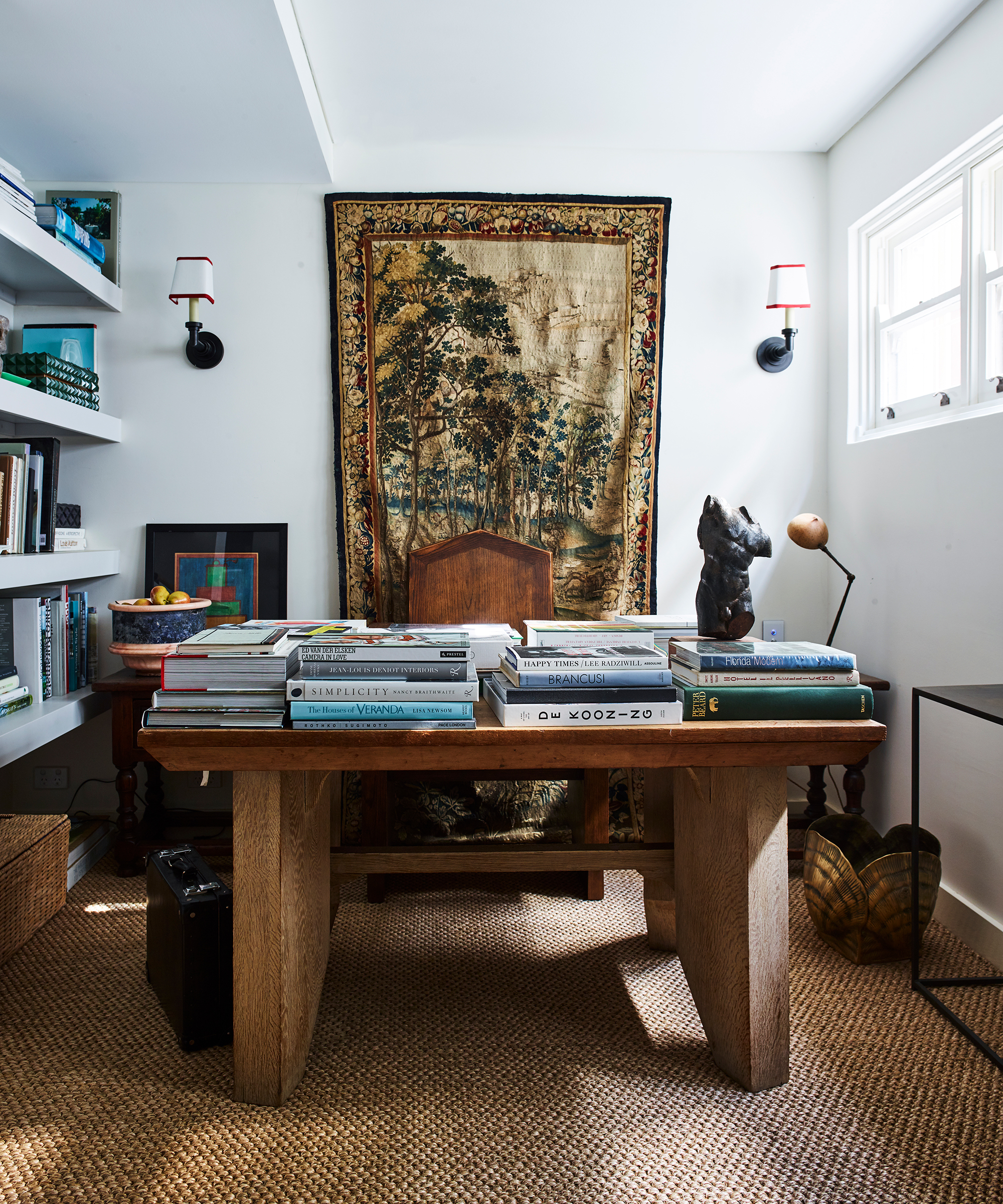
To stop home offices from feeling too perfunctory, injected warmth and personality with a carefully considered choice of antiques, sculpture and art.
'I wanted this room, to feel calm and considered yet restrained and not overly decorated – less is so often more,' says interior designer Tamsin Johnson who designed this room. 'An antique Flemish tapestry forms the backdrop of the scheme. The desk is mid-century and always covered in favourite books; more of them sit on the white-painted floating shelves. This is both a tranquil space and a nice escape.'
4. Always consider lighting
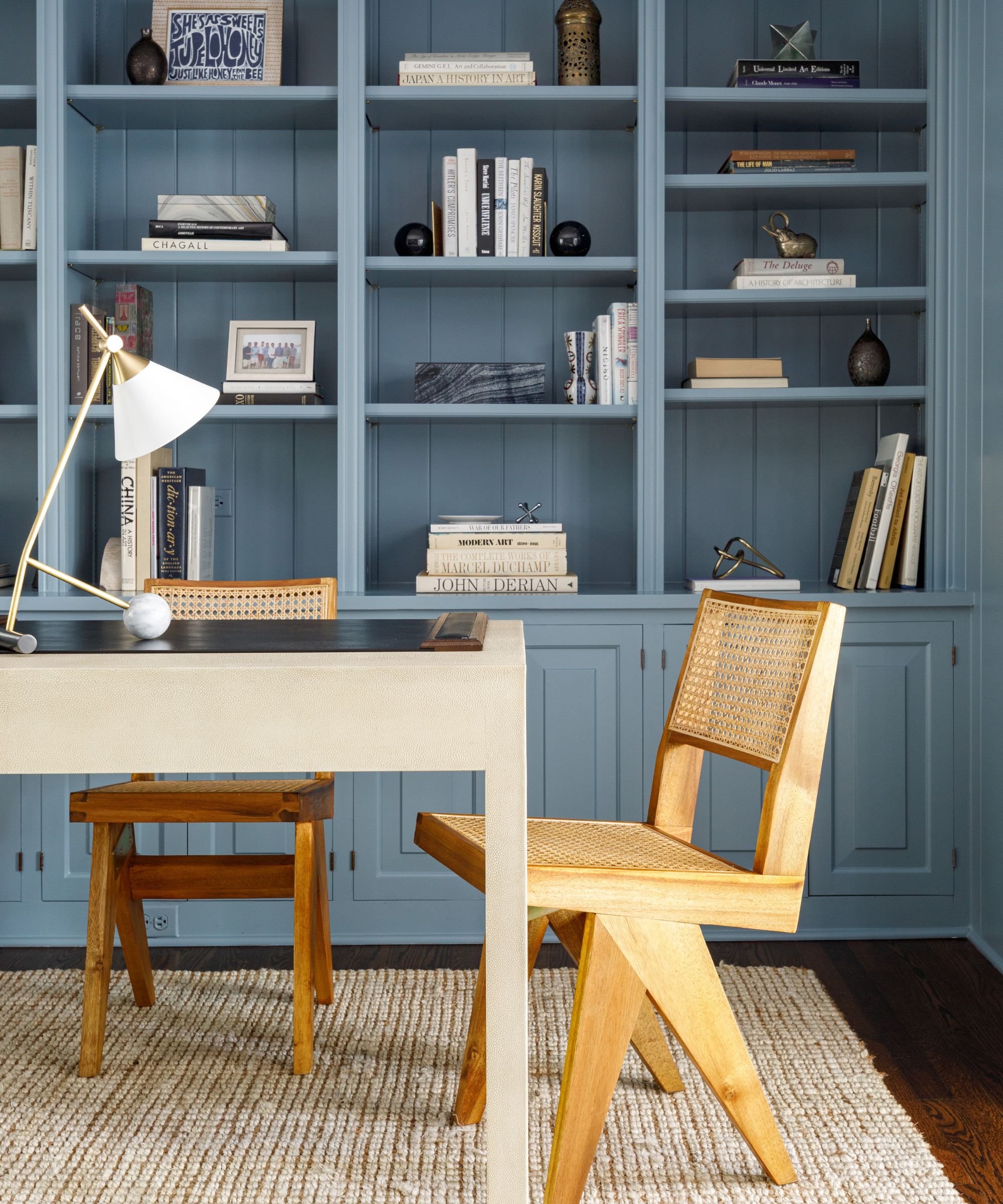
It goes without saying that good home office lighting is key. Although a vital step, it's also one that is easy to implement as there are plenty of lighting options out there.
'Lighting is an effective way to zone your living space, defining areas for different activities and making every corner count.' Peter Bowles, founder of Original BTC. 'A perfectly positioned wall light, overreach floor light or clip light can provide an immediate solution to illuminate targeted areas for the performance of specific tasks or activities. A bone china shade will create a soft welcoming environment you’re eager to spend time in,' he adds, which is important when your home office is positioned in a room also used for relaxation.
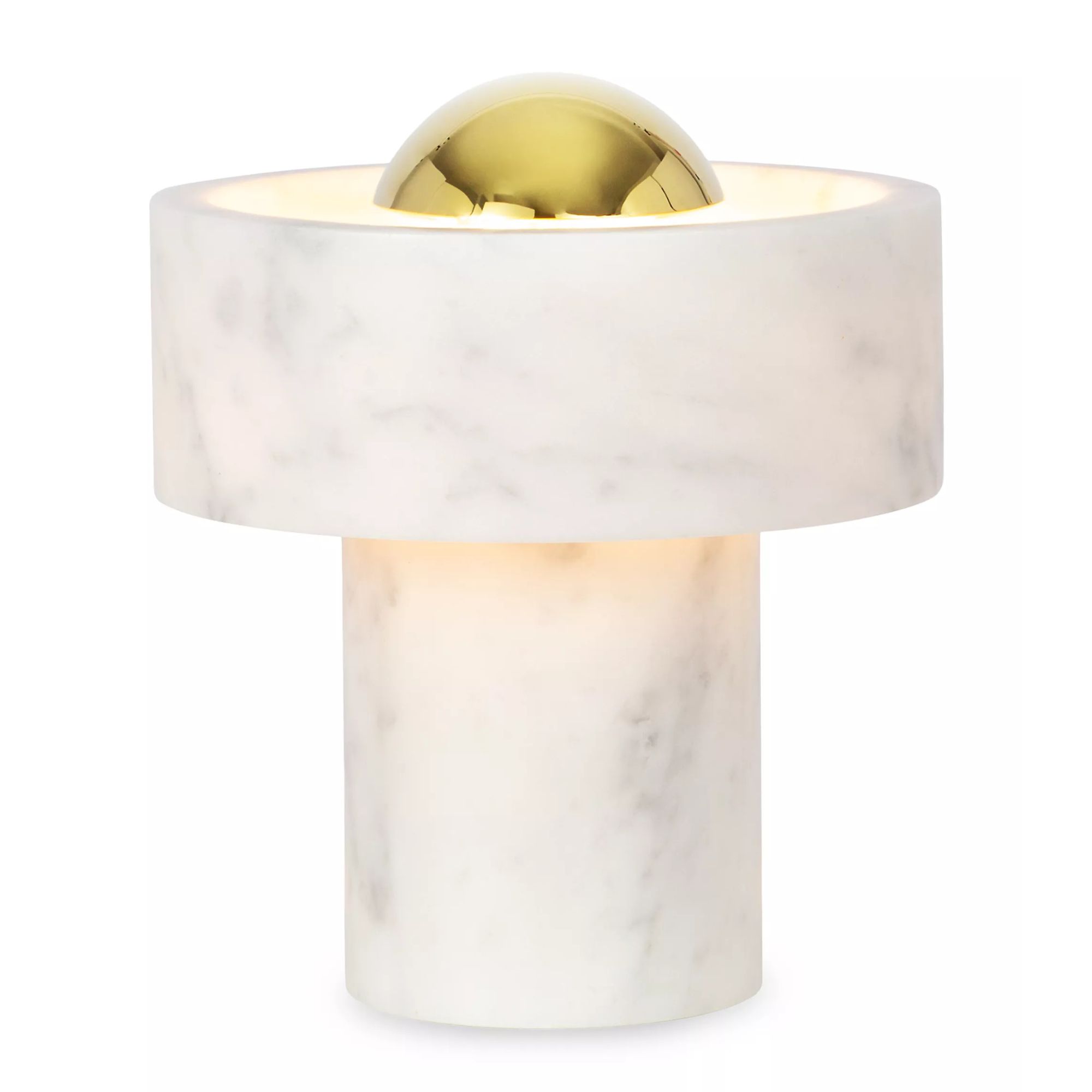
Made of polished stone, this table lamp will elevate any plain desk area and bring a classic elegance that will make an office feel inspiring and stylish.
5. Consider plenty of storage and cabinetry
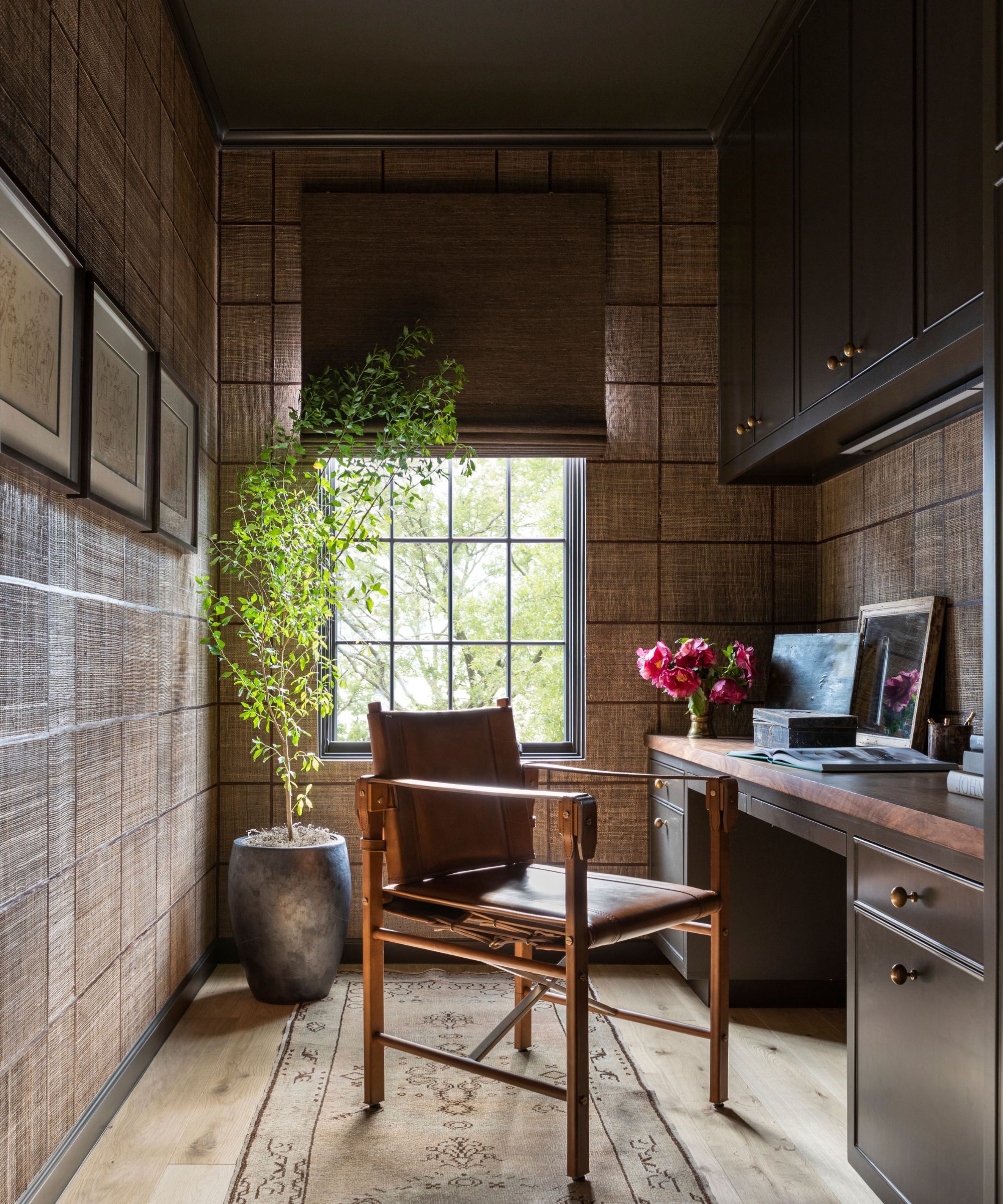
The inevitable part of having a home office is ending up with lots of papers, files, and notebooks which is why office storage is so important. Depending on your requirements, storage comes in many shapes and sizes making it an easy solution that can sit in your home office.
A filing cabinet is a classic way to store loose papers, but with many of us working digitally, a large set of drawers is not always necessary (or feasible if you're tight on space). Opt for a compact set of desk drawers or trays for important papers and rely on shelving to house your favorite and most-used books.
6. Make a home office multi-functional
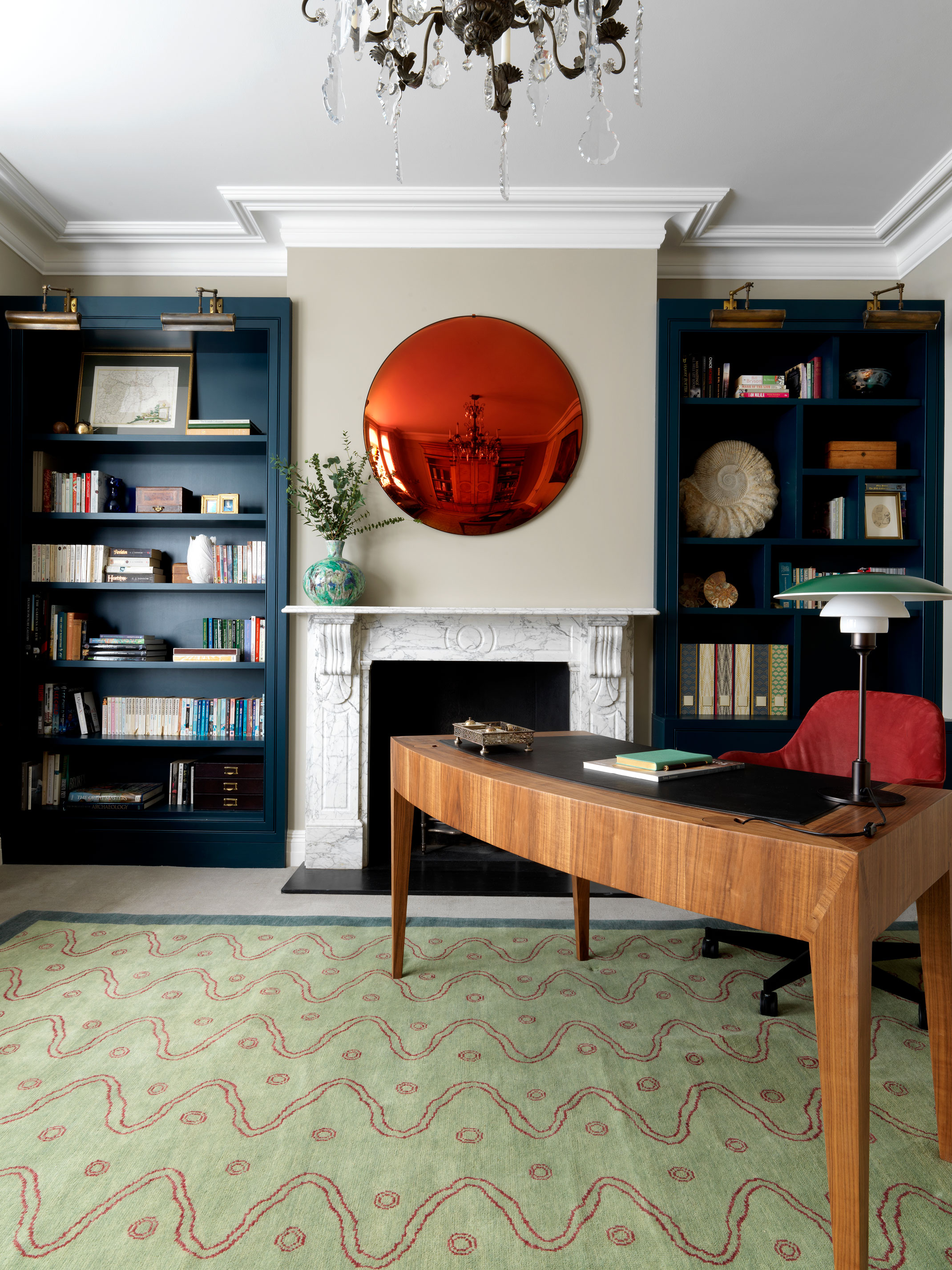
Looking for guest room office ideas? Believe it or not, this chic space was designed with them in mind.
'Our brief was to design a space that looks and acts as a study most of the time but also has a sofa bed in the bay window for guests,' says Henry Miller, who with Katie Glaister of K&H Design blended high craftsmanship with exacting details in this versatile London space.
The desk, which was designed by K&H and made in Colombia, 'is curved so that the papers fan around as you work,' explains Katie. 'Cables are channelled down one of the legs and there's a shallow pen drawer so you can sweep everything away when guests arrive. A printer is set low in the shelving unit within swivelling reach of the chair.'
Organizing a desk impeccably is a must for a space where the desk faces into the room, so ensuring your home office storage ideas are capacious is vital.
7. Create a wall of shelves for chic storage
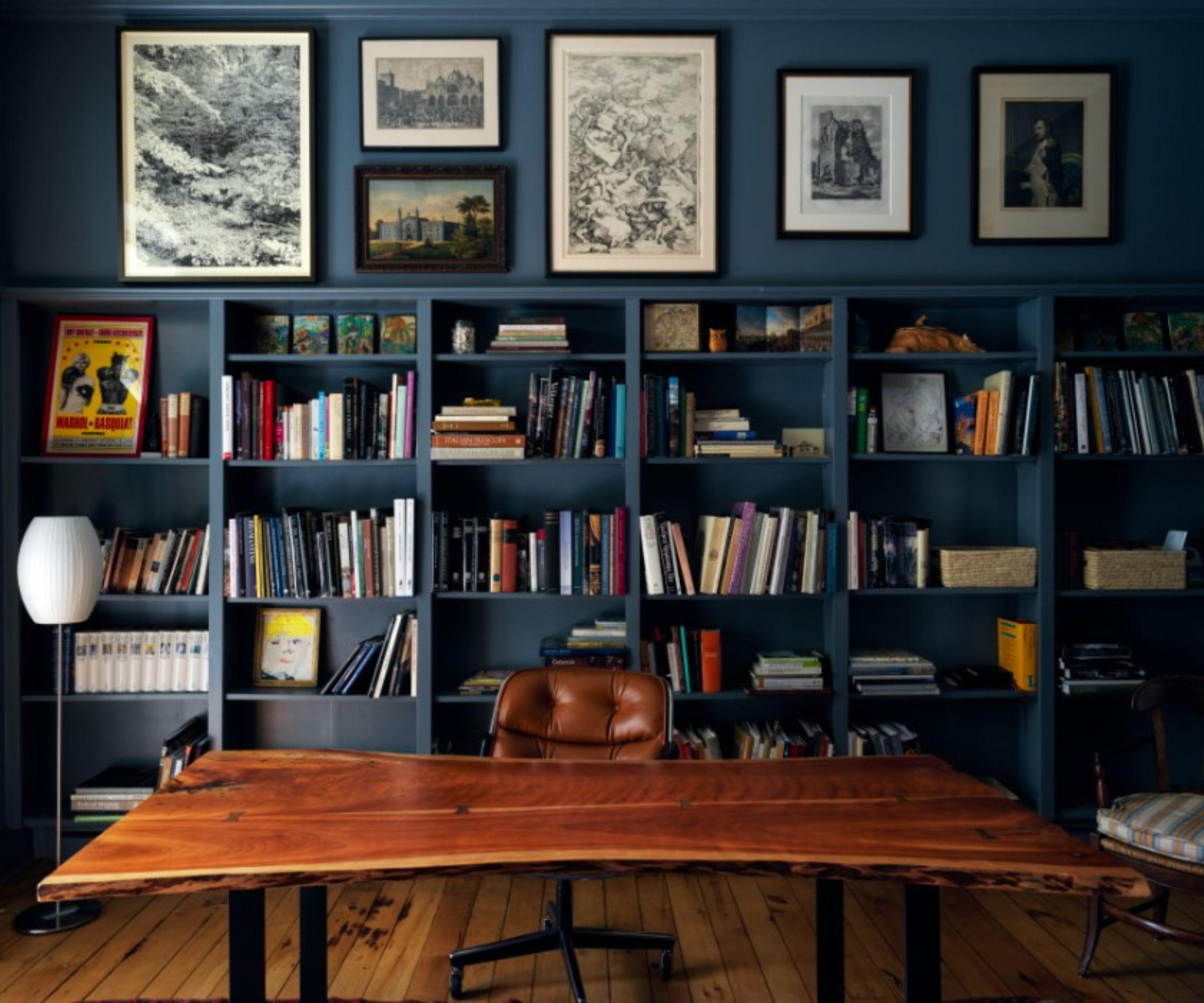
No home office space is complete without books. We love the look of a wall covered in books as they always add a ton of character and texture. But for those who prefer a more minimal approach, there are plenty of book storage ideas.
If your home office is small – or within an open plan space, limit your books to one wall with wraparound shelving as this is a good space-saving option. In this situation, use vertical space to your advantage, stacking rarely used files up high and oft-used paperwork to hand.
Your bookshelves don't have to be dedicated to just one type of decor either. Incorporate some statement ornaments or wall sconces to highlight your little library and make the area feel eclectic.
8. Prioritize natural light
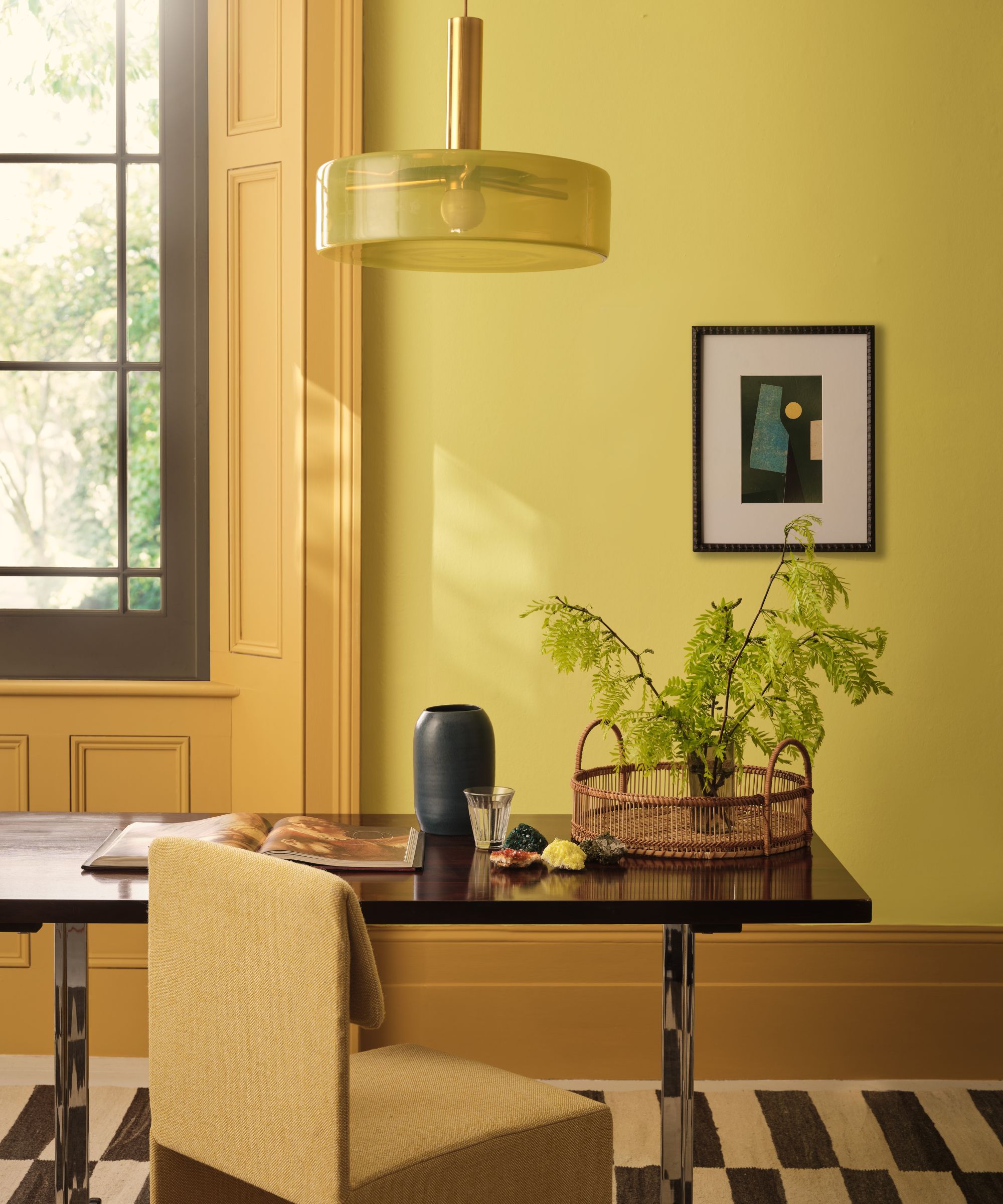
When you're in need of a boost, nothing makes more difference than a big dose of natural light. Luckily, there are many ways to ensure you're getting sunlight even indoors.
Position your desk opposite a window as this will ensure you're met with sunlight while providing you with an inspiring natural view to gaze at as you work. If the layout of your office doesn't enable this then consider taking frequent breaks and heading outside to increase overall productivity and prioritize your mental health.
9. Combine the office and the bedroom
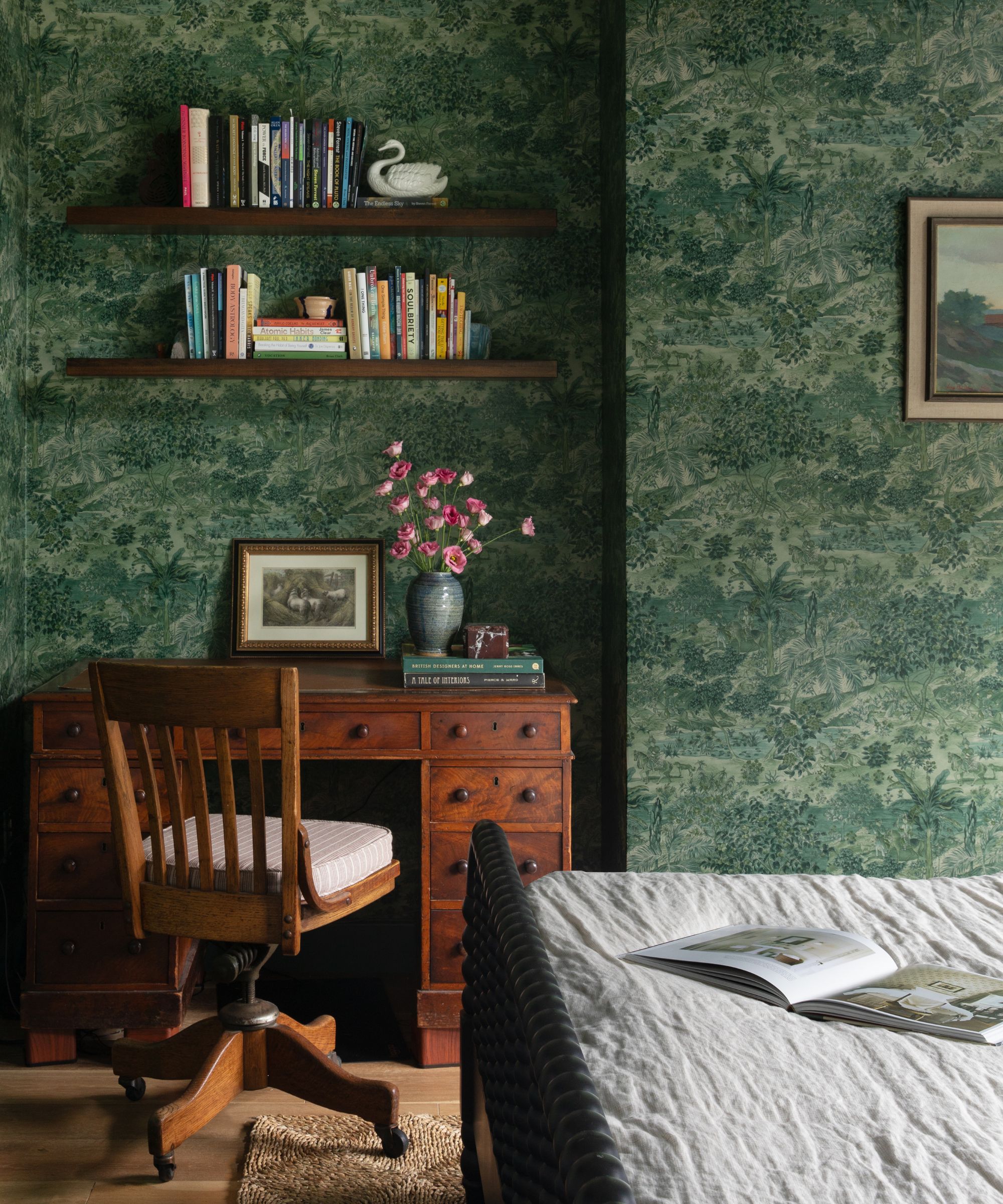
Having a designated office room isn't feasible for all of us which is when bedroom office ideas come in handy. Whether you position a desk at the end of your bed against an empty wall or in the alcove near a window, bedrooms can work just as well when working from home.
We don't typically use bedrooms during the day, making them an apt space to work without any distractions. Separate your office area by using a curtain rod and pair of drapes or for a more subtle look, try sectioning your desk away from the bed by using contrasting paint shades. Just be sure to position your workstation as far away from your bed as possible to keep sleeping and working feeling very separate.
If you don't work from home often, creating an office in your bedroom is a great way of utilizing space while still creating an at-home working area.
10. Make sure the area still feel comfortable
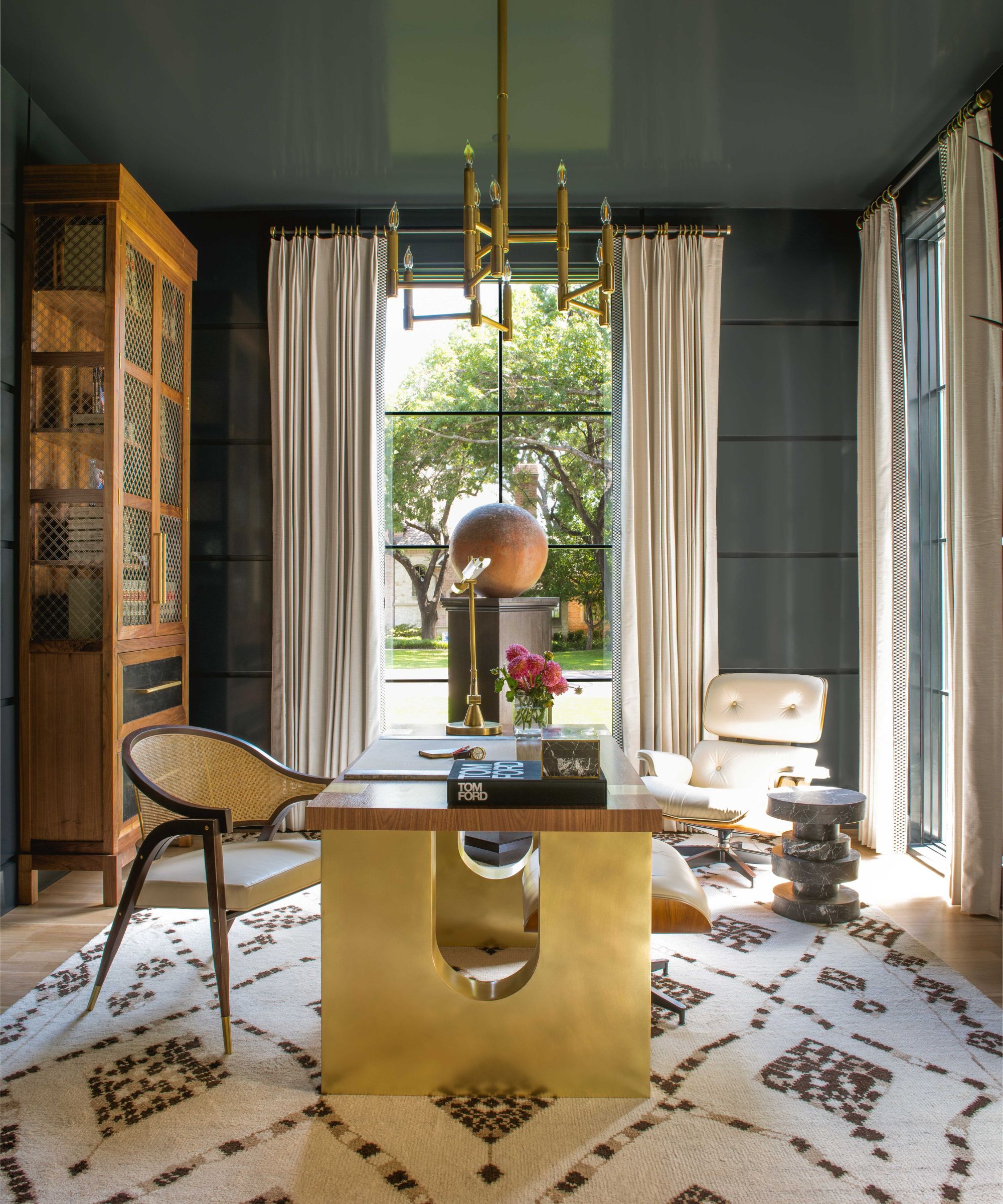
While offices aren't typically made for relaxing, it's important to bring some comfortable seating into the area to enhance productivity and make the space feel inviting.
A comfy armchair can be used at your desk or help to furnish an empty nook that provides a guest with a seat to lounge in and chat. Most reading nooks feature a comfortable element as it's an area designed for concentrating and offices are the same.
‘Given that we all spend an increasingly long time in our home offices, it needs to be comfortable and visually pleasing. You don’t need to make a choice between practical and aesthetic,’ adds interior decorator and fabric designer Flora Soames.
For a more unconventional yet playful feel, incorporate a plushy ottoman or beanbag that will suit your needs when you're taking a break or when a guest arrives and wants somewhere to relax.
11. Adopt a calming color palette
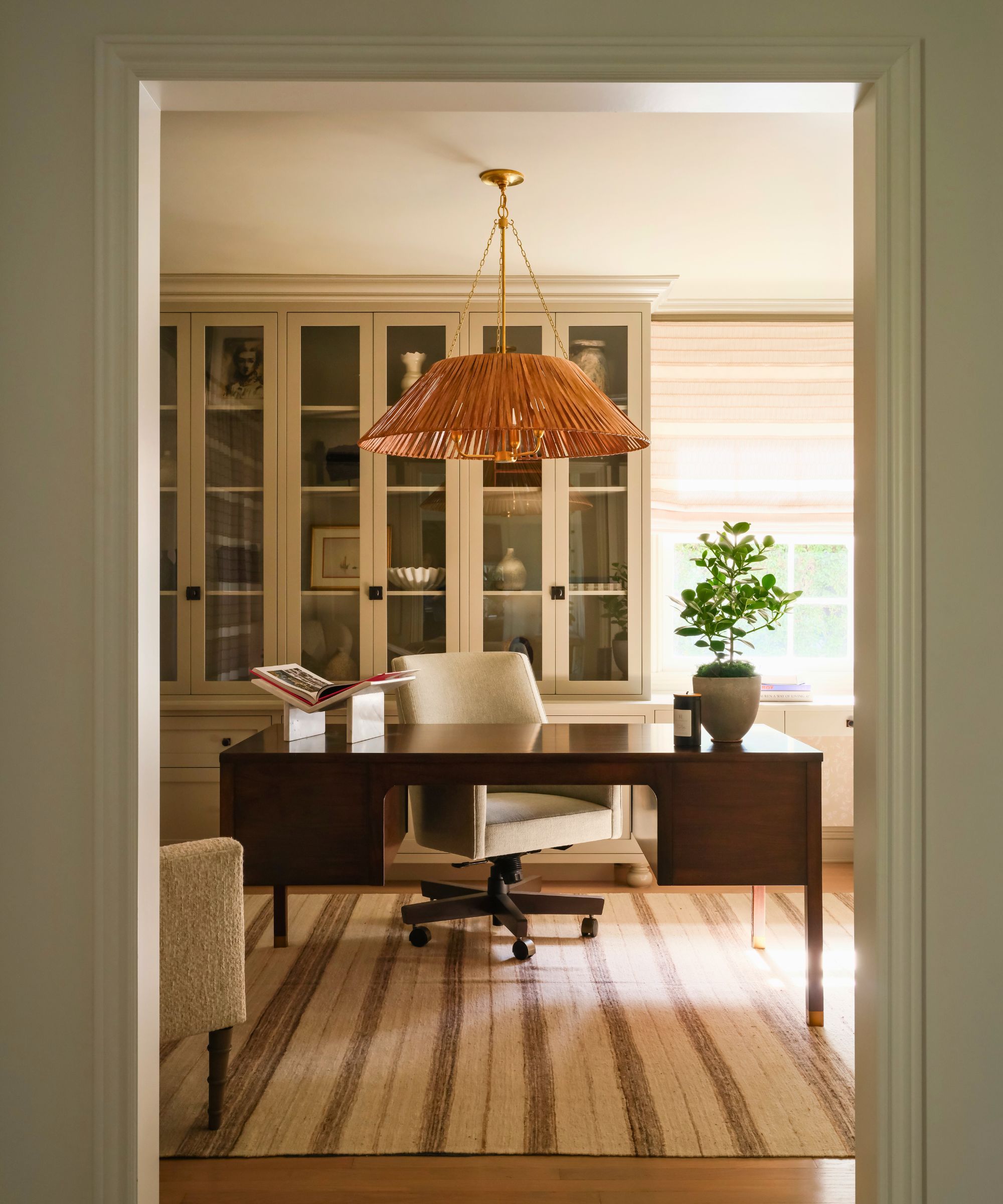
This home office is finished in a simple yet calming cream that allows the rest of the decor to do the talking.
There are plenty of options when it comes to home office paint colors. While your final paint shade will depend on your tastes, there are certain colors that work better in a workspace than others.
Green is known to provide a sense of calm and boost home office productivity. From dark forest green to a muted sage, there are plenty of varieties that link back to nature and serve as the perfect wall shade.
Playful hues are less conventional but create a lasting statement that is bound to have you feeling motivated for your day of hard work. Despite its dark hue, navy blue feels both fun and timeless, synonymous with the preppy interiors of early 20th-century libraries.
Patrick O'Donnell, Brand Ambassador at Farrow & Ball says, 'A green-based grey can also provide a sanctuary of calm, with delicate colors like French Gray or Bone used across walls, woodwork, and ceiling. These shades will act almost as neutrals and are easy to layer with other shades and a multitude of textures and wood tones.'
12. Incorporate a statement wallpaper or mural
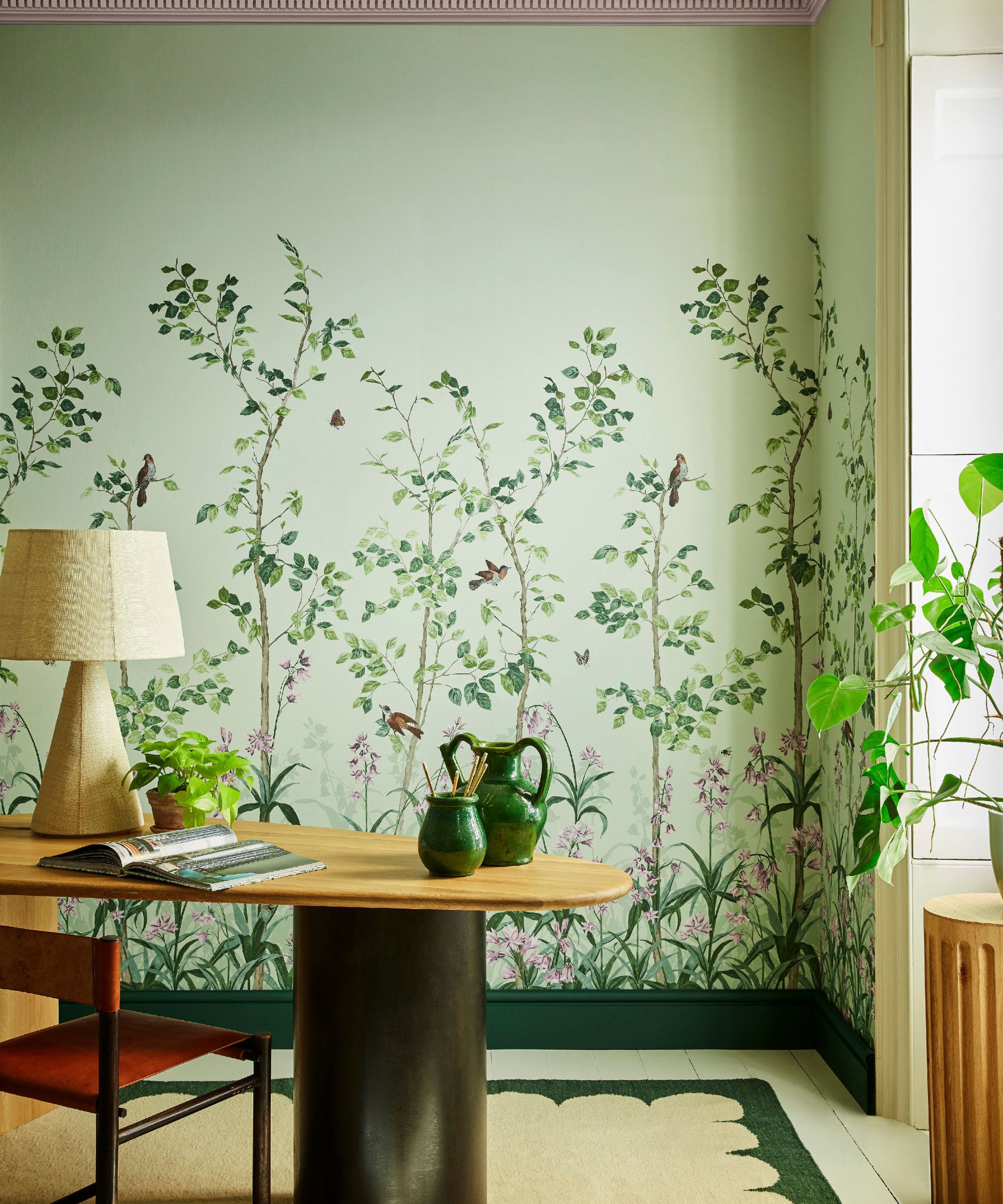
Rather than opting for a blank canvas on the walls, add to the creative inspiration by way of patterned wallpaper or a statement wall mural.
Ruth Mottershead, Creative Director at Little Greene says, 'A home office space should be somewhere that inspires and aids concentration. This space should feel separate from the rest of the home, whether it be a dedicated study or simply a zoned corner within another room. By incorporating a mural wallpaper design you can establish a sense of space, and murals such as Bird & Bluebell and Upper Brook St will create a glimpse of a world beyond your four walls.'
13. Don't be afraid to riff from your usual style
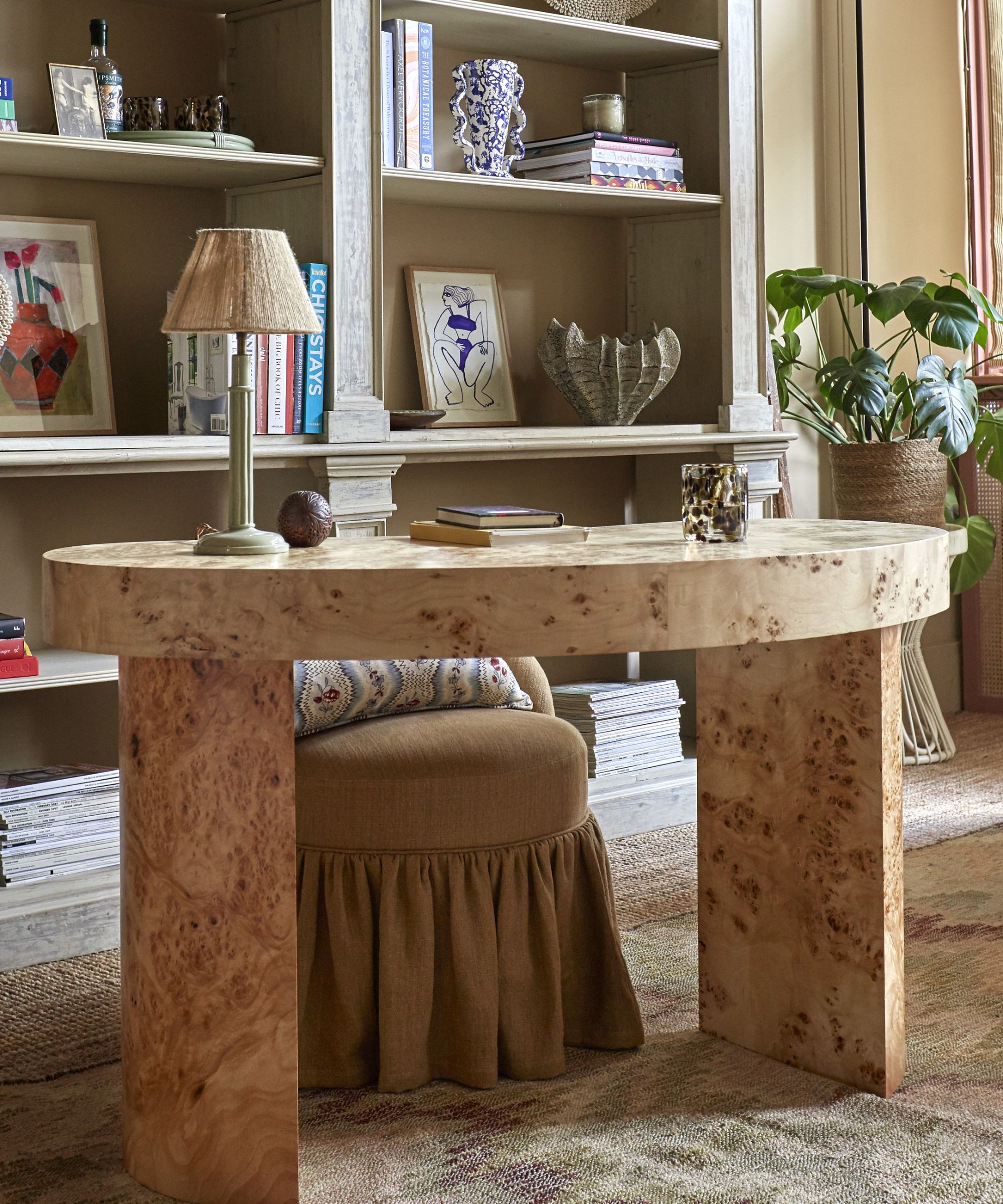
The home office is typically confined to one small room or nook. As you're working with one small area, now is the time to brave a new style or incorporate an unconventional piece in your office design.
Don't be afraid to truly go for it. 'Home Offices need to be super functional but also reflect the person working in them. While your overall home could be one style, the home office could riff a little further on that style or be slightly less of that style to reflect the person in it day-to-day.' says Leigh Jendrusina.
14. Nail the wall decor
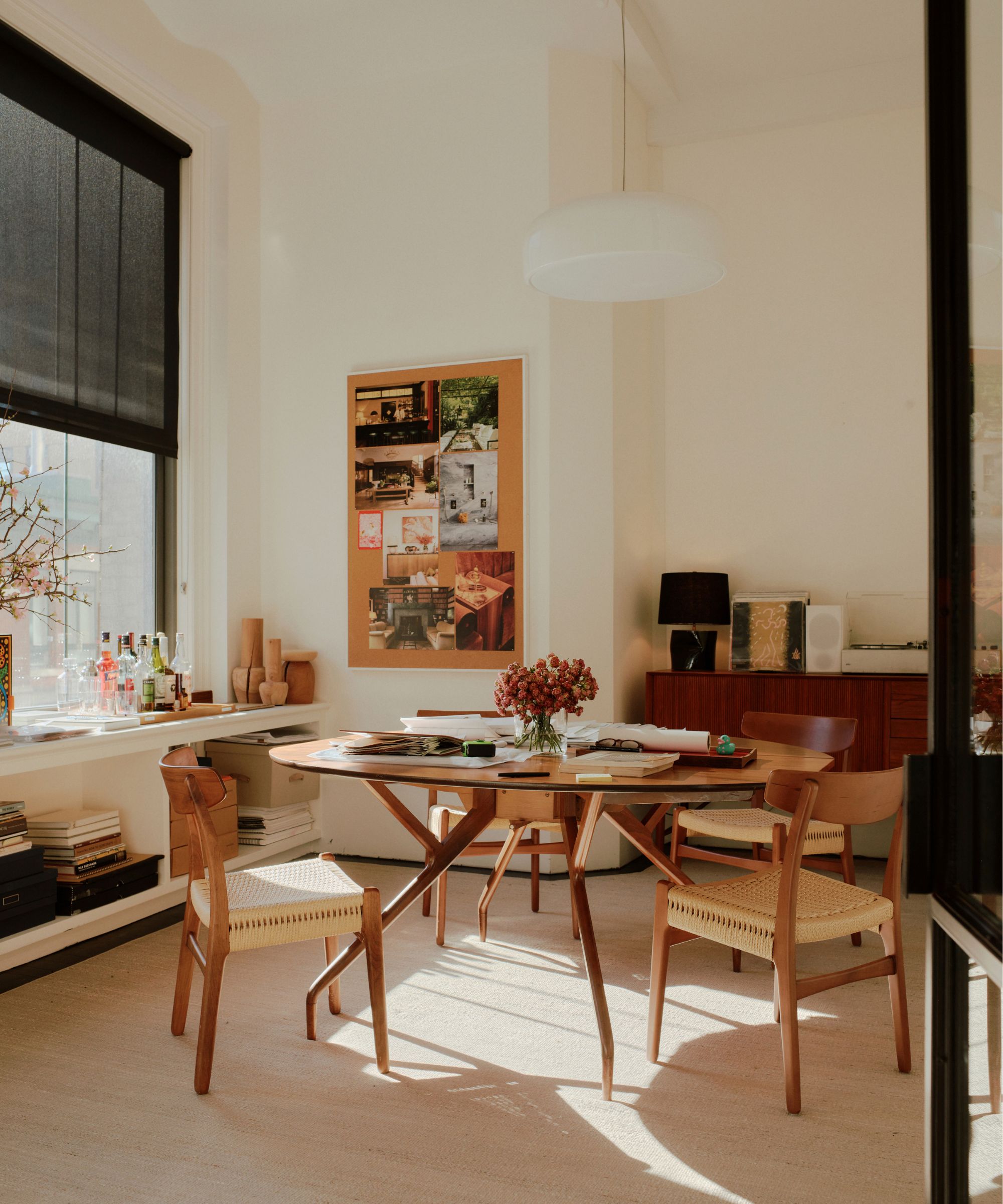
Office wall decor is one of the most crucial design elements within the home office. It's an area the eye will often turn to, searching for inspiration and motivation to guide you through your day. It's likely to be noticed by others too. During a work meeting, colleagues are bound to gaze admiringly at a wall that features artwork, a statement noticeboard, or an interesting shelf display.
'Some of my favorite pieces in home offices are art and plants because with all the Zoom calls you’re inevitably doing in there, the wall decor is important,' says Leigh Jendrusina from Salthouse Collective.
Alexandra Kaehler agrees, saying 'We’re designing home offices – all with a common thread of consideration for the video background. We focus on having a background that is interesting and well designed without being distracting.'
Hanging art is an easy yet effective way of bringing interest and personality into your workspace. Style it in a decorative frame and place it amongst other hangings for a wall of inspirational art.
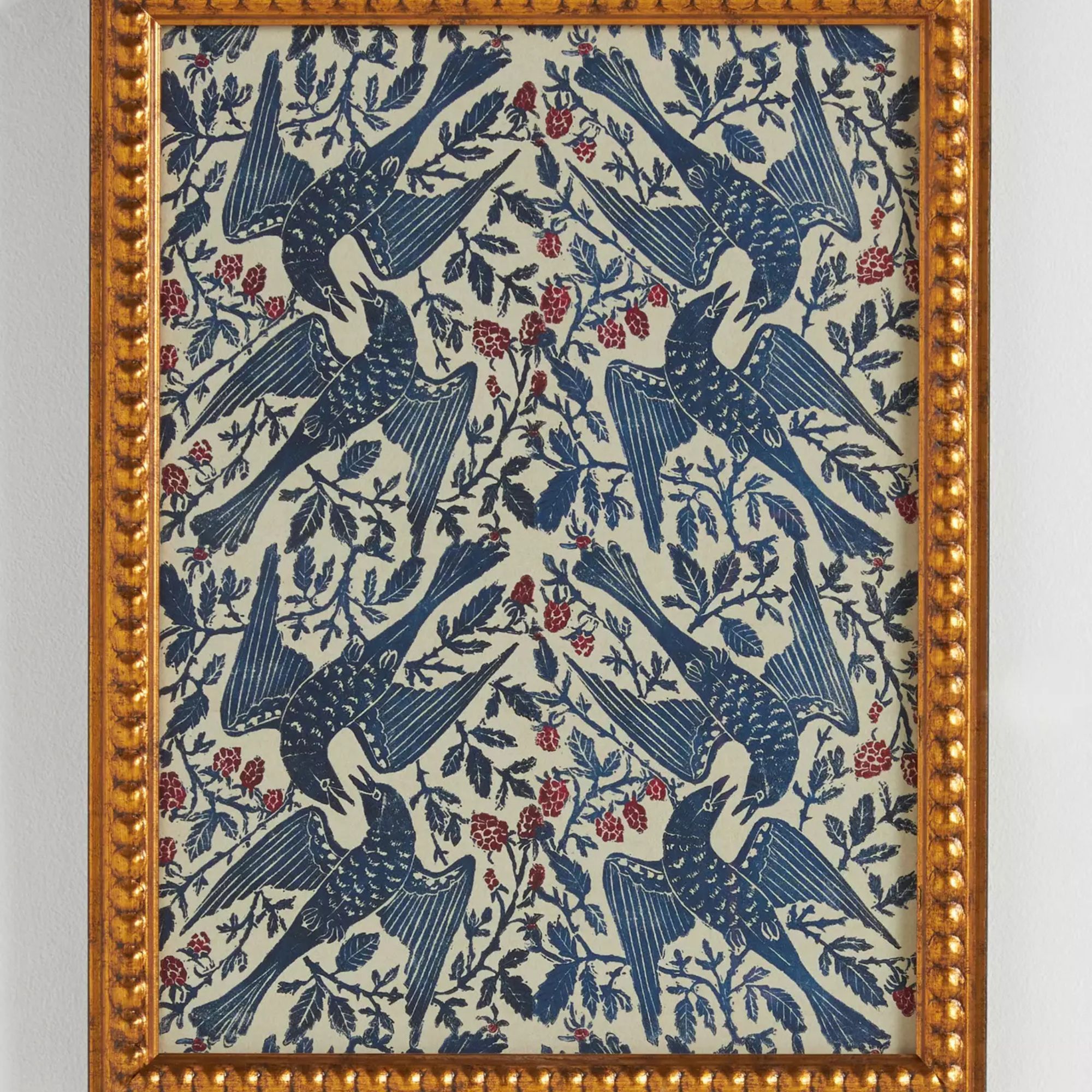
There's nothing like a pretty print to cheer up an empty wall. Hang this delicate picture above your desk and bring some life to your office.
15. Bring in antiques for a characterful feel
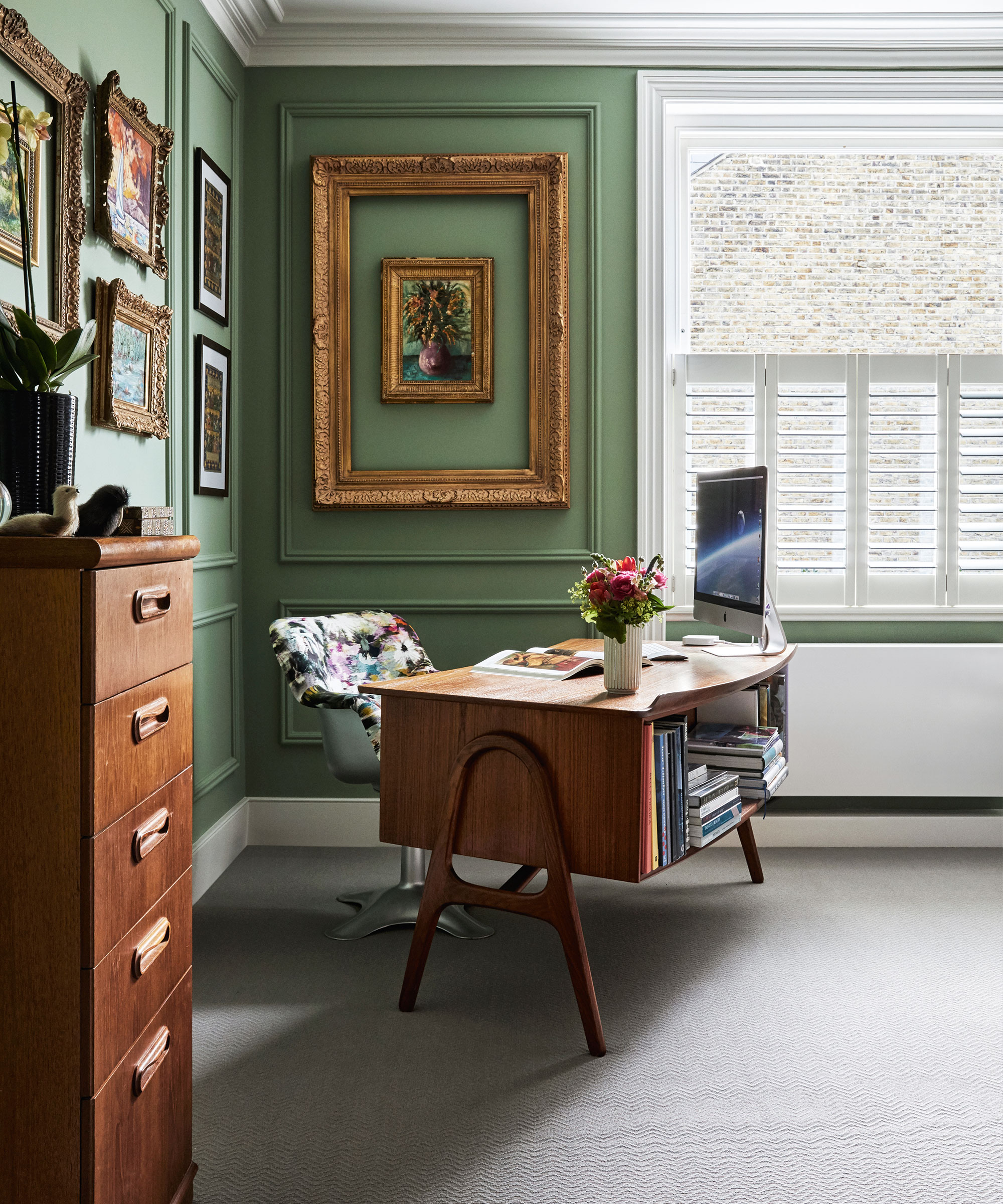
Decorating with antiques can be a great way to bring character and unique style to a home office, particularly if you want to keep the walls white or wall-to-wall bookshelves prevent you from hanging artwork.
There are many kinds of antiques that work in an office space. From second-hand chairs to one-of-a-kind pieces of art, what you select will mirror your taste and style which is why antiques are a great way of creating a meaningful space.
Vintage desk decor is proving ever popular as it provides a sense of refinement while fulfilling any storage needs. There are plenty of styles to choose from but one of our favorites is midcentury desk accessories like apothecary style drawers or an antique pencil pot.
16. Always incorporate greenery
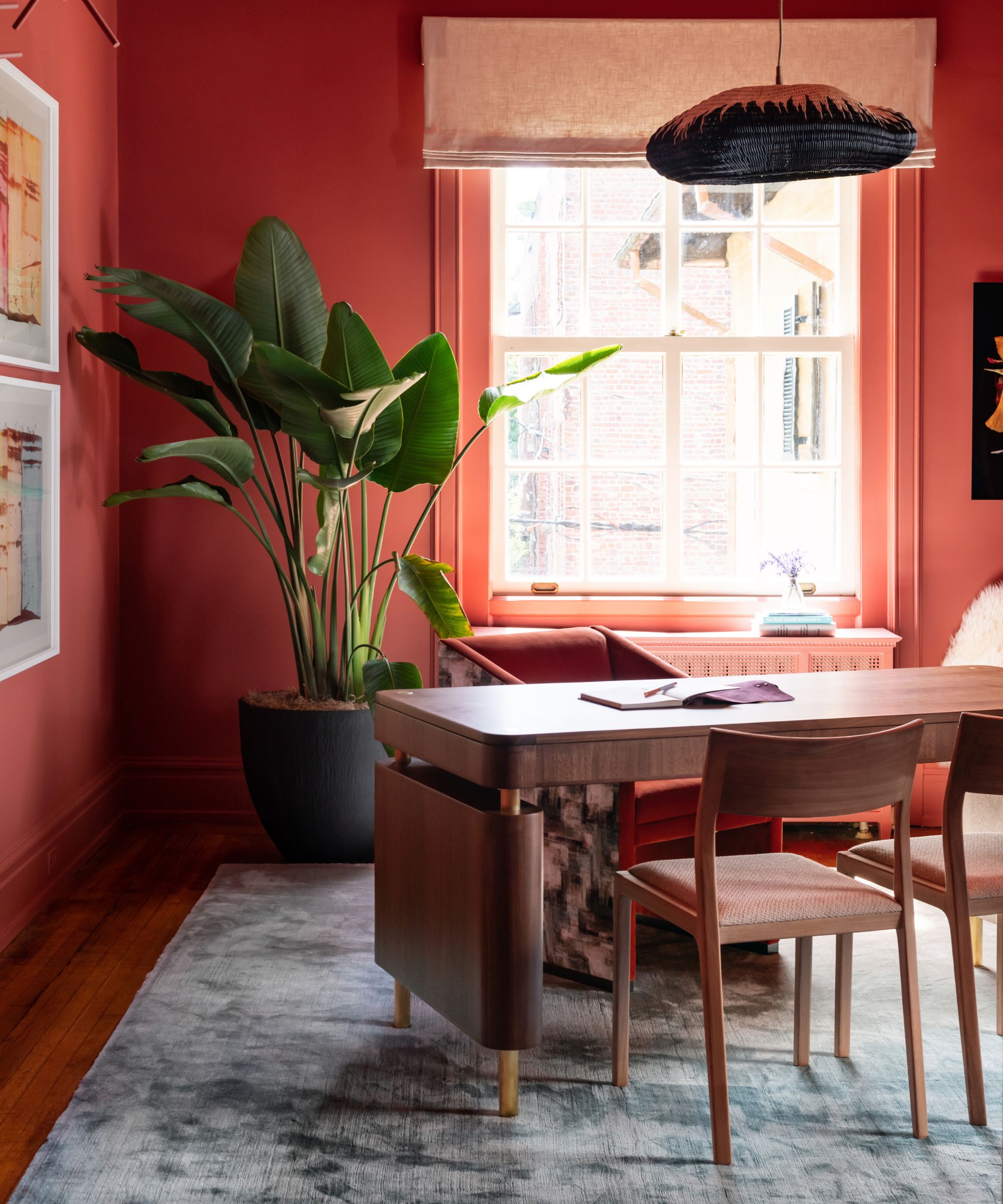
Nature-inspired patterns, pictures, and furnishings have long been popular ways to decorate. They work well in any space, providing a refreshing reminder of the beauty of nature. One space that particularly appreciates a touch of nature is the home office.
Being cooped up all day working can result in a desire to go outside and take in the fresh air. An easy yet effective way of bringing the outdoors in is placing plants on your desk or around your office to uplift the room and add a touch of vibrancy. Desk plants have been proven to boost concentration, making them a bit of a no-brainer when it comes to office feng shui.
‘A great way to achieve this is by using colors and textures that help you recall the natural world whilst you’re clacking away,’ says Sue Jones, creative director at Oka. You can bring nature into your scheme in a less literal way too by decorating with botanical wallpaper or scattering some pictures of flowers or landscapes around the room.
17. Reflect your personality or interests
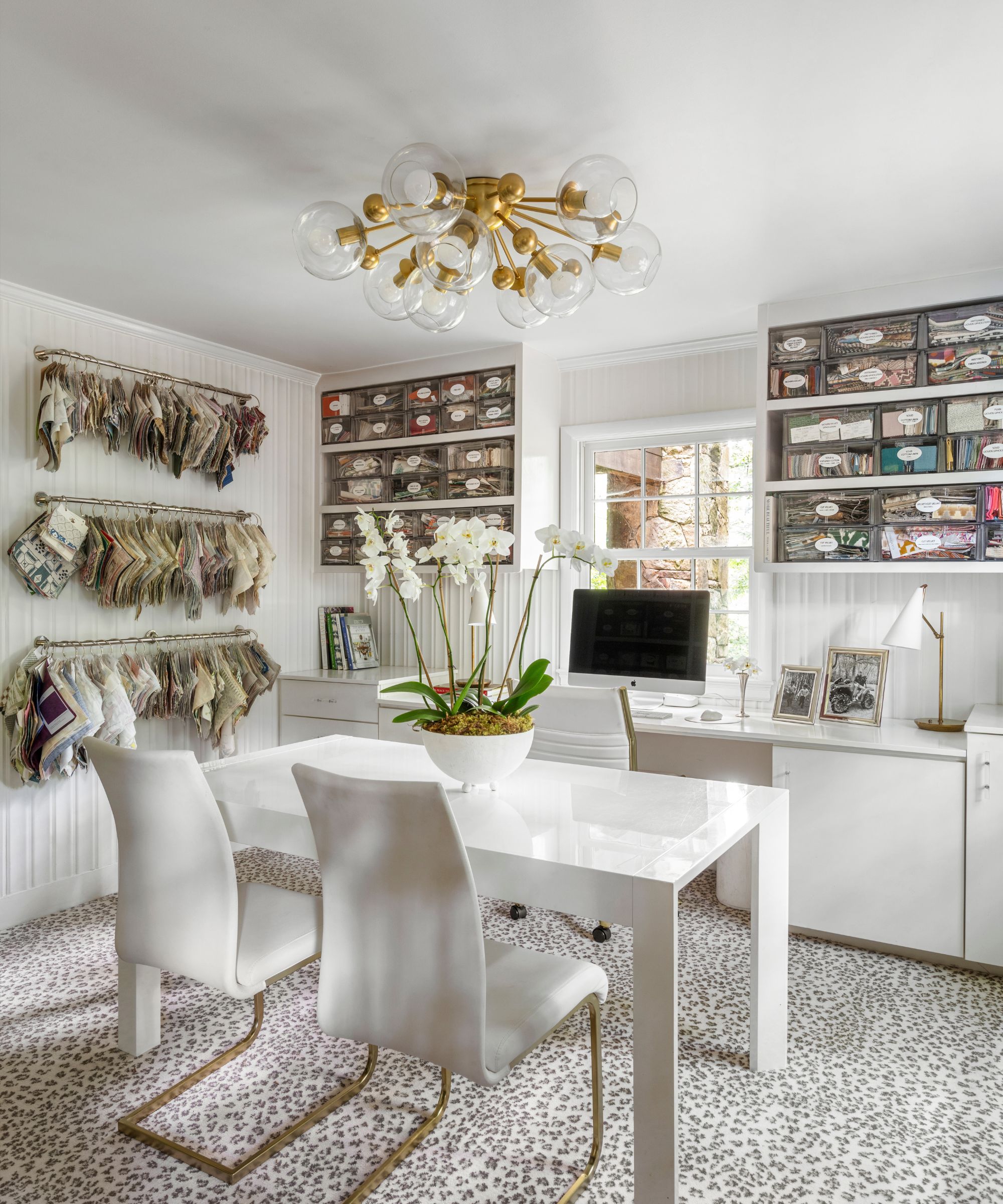
The workplace is typically associated with professionalism, which means that character and personality have sometimes taken a back seat when it comes to home office designs.
It's important to create a practical space but it's also never been more necessary to channel creativity in the office as it will make working from home feel more enjoyable. Whether you prefer minimalist decor ideas or maximalist styles, be true to yourself and what you enjoy.
Your home office is a space that's dedicated to you, so reflect your interests when designing as this will spark joy and create a visual statement that others are bound to notice.
18. Go bold and color drench
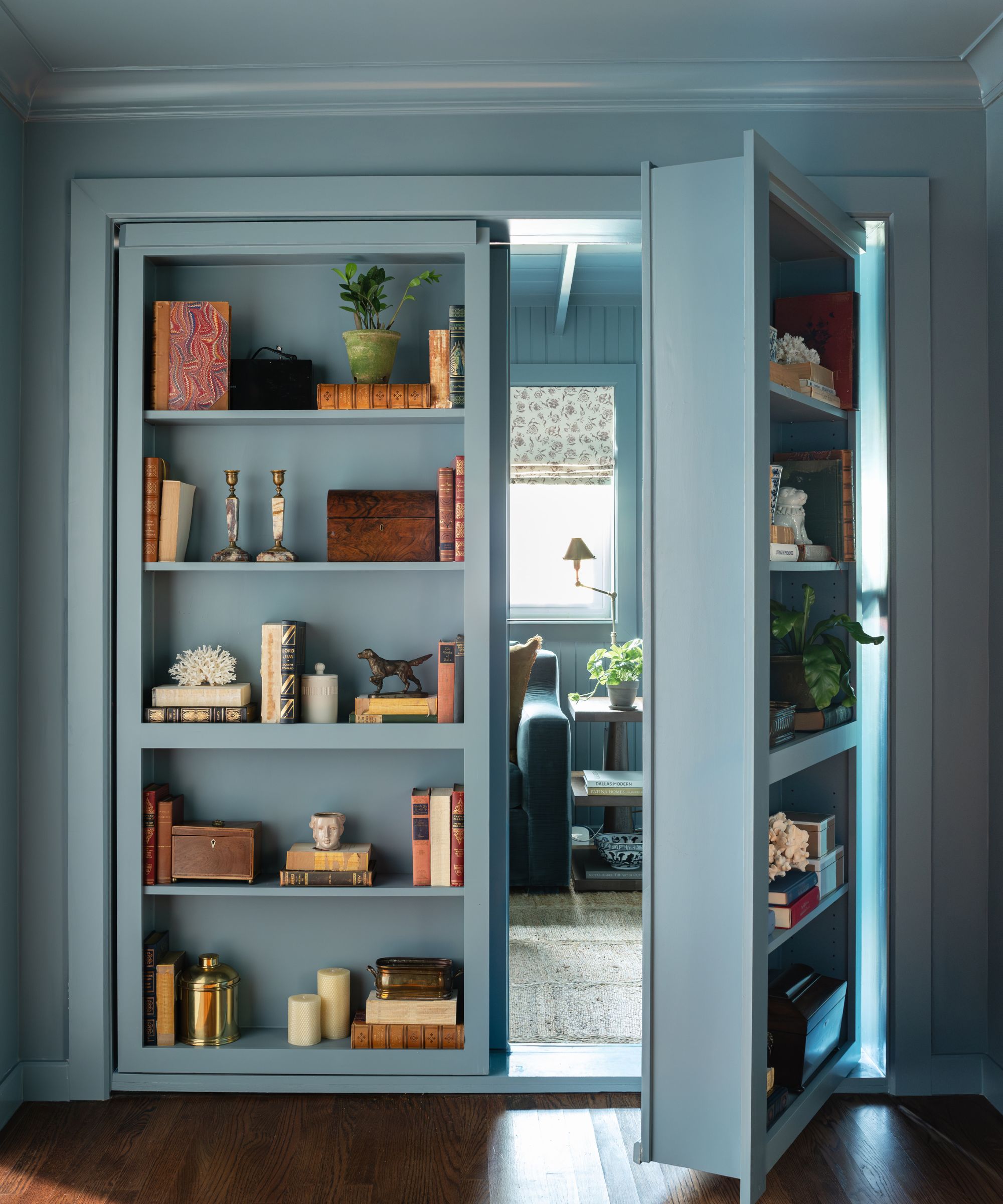
Color drenching is a popular design style that you likely would've seen all over the internet. Interiors are 'drenched' in one shade from head to toe, resulting in a bold, playful room that feels both on trend and sophisticated.
'When designing a home office, organization is key, and as we all know these spaces can quickly feel cluttered. Color-drenching built-in cabinetry or shelving is an easy and chic way to keep the space visually organized. Washing the walls, cabinetry, and moldings in the same paint color unifies and grounds the room.' says designer Christina Kim.
The color-drenching method works particularly well in a home office, as it both sections the area (if you're working in a multifunctional space) and makes the room feel snug and inviting.
19. Give your windows a lick of paint
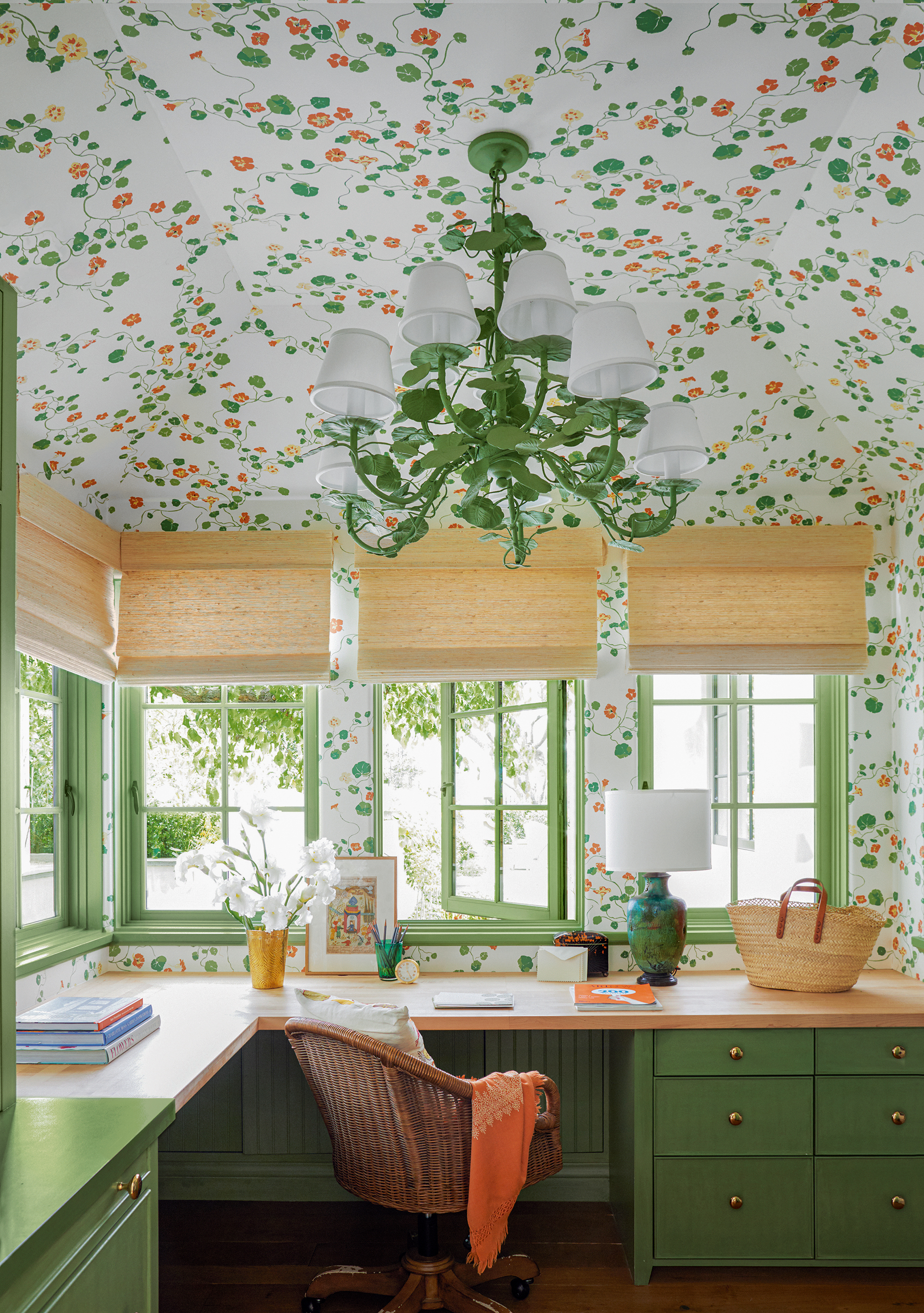
To bring some vibrancy to your office area, paint your window frames an inspiring color that will spark joy and make the room feel even more personalized.
There are plenty of window colors for your home. Whether opting for a luscious green (like the office pictured above) or a whimsical butter yellow, fun colors can liven up a plain window frame and enhance the room's architecture.
To ensure you're getting your daily dose of sunlight, position your desk near the window as this will make a huge difference to your daily health and motivation in the long run. With a fresh new coat, you'll want to be as near to the window as possible!
20. Match upholstery fabrics with wallpaper
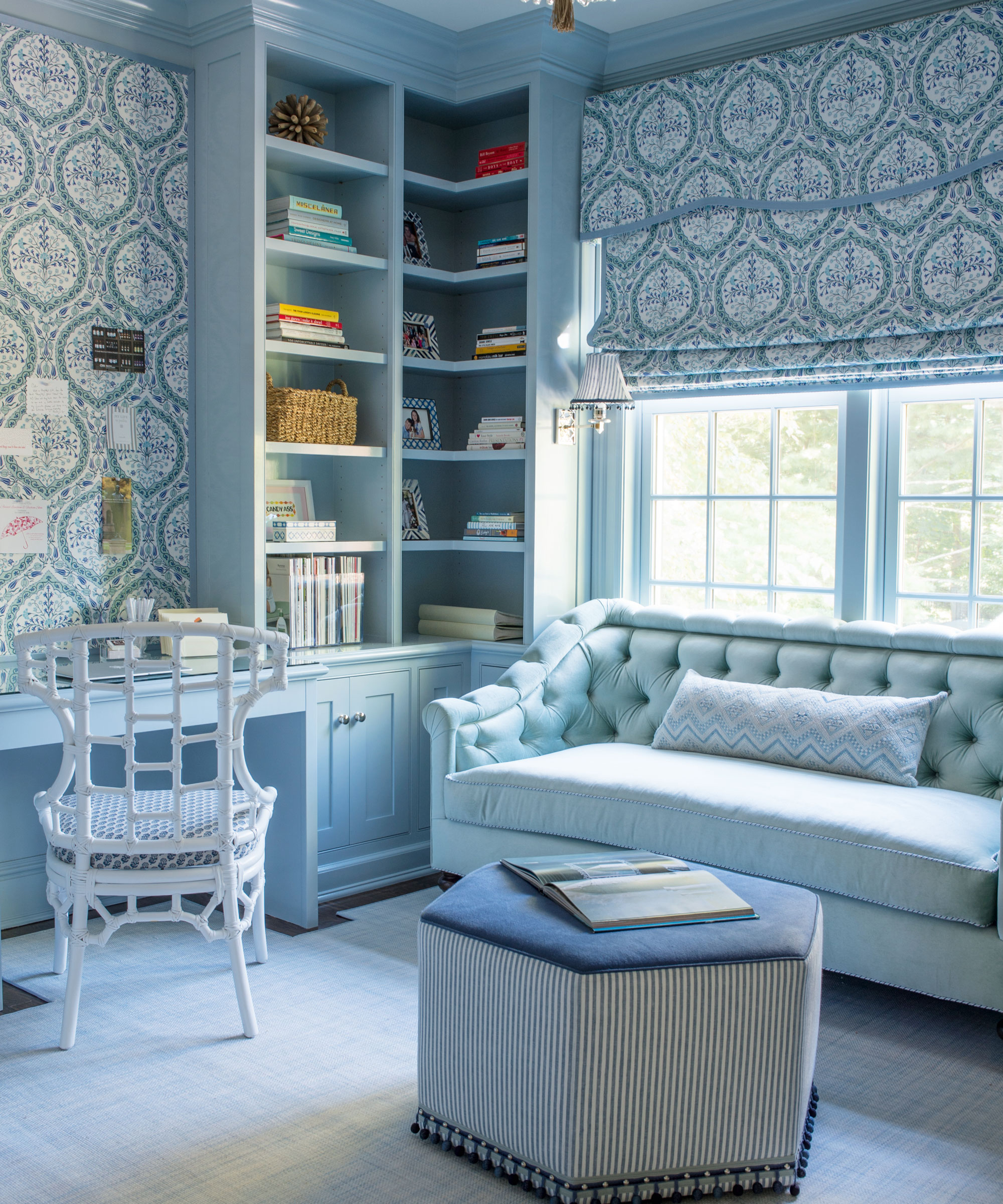
The work-from-home room pictured above has been achieved with a clear vision and cohesive eye, making the space feel elegant and chic. A few things make this office feel inspiring, but the matching upholstery fabrics and wallpaper instantly catch the eye and create impact.
You don't have to go for a full-on pattern-drenching look either. In fact, you could match a simple throw cushion to your wallpaper or install a printed Roman blind that coordinates with a lampshade. It's all about making the space feel considered and well-designed, as this will entice you to get working and uplift you when you're in a slump.
21. Display meaningful objects
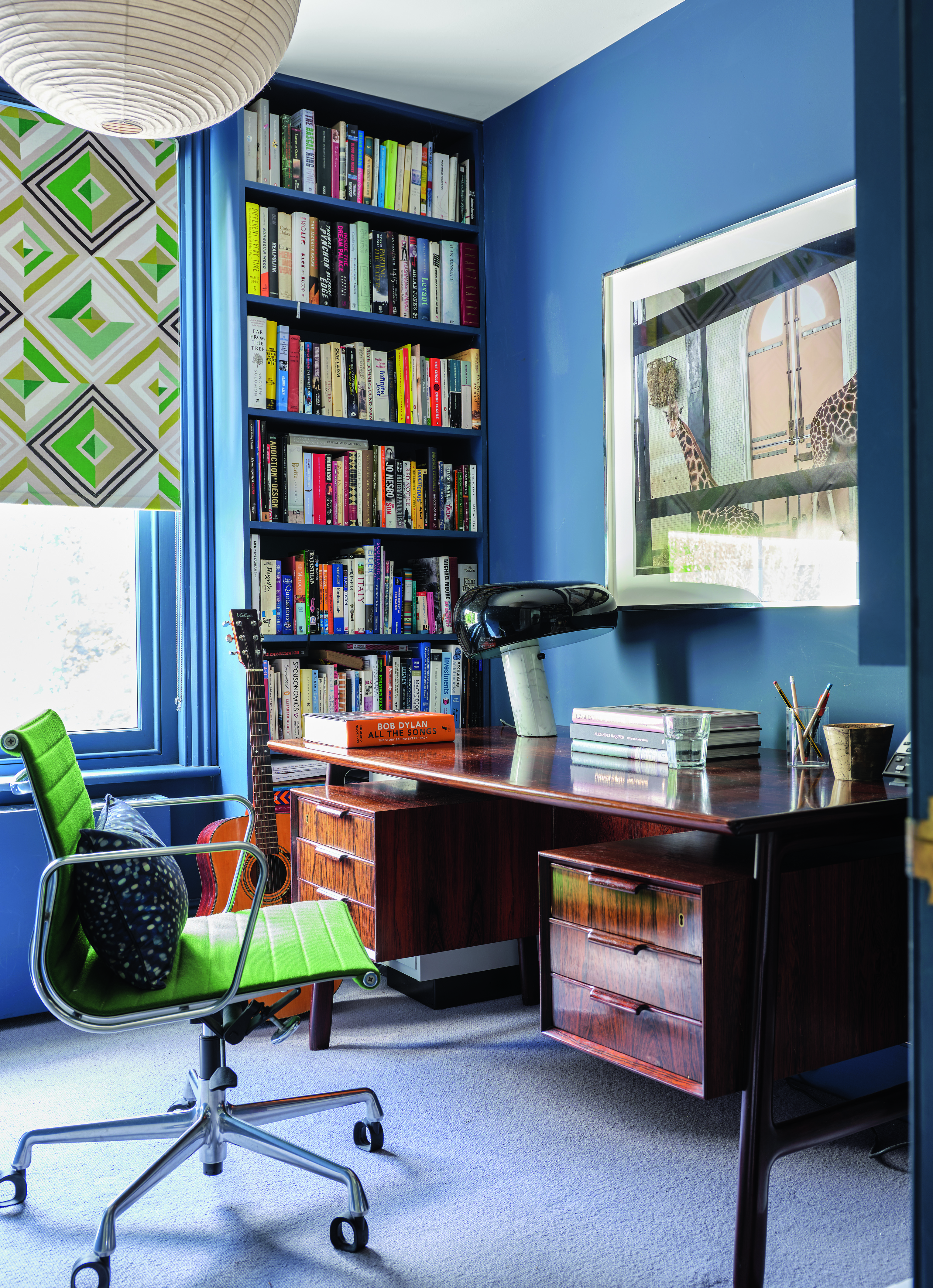
The importance of an office can sometimes be forgotten but if you work from home often it's a space you should turn your attention to as even small offices can be made to feel unique and stylish.
One of the easiest and most effective ways to uplift any space is by incorporating meaningful trinkets and sentimental objects. Whether a family photograph in a stylish frame or a trinket box filled with prized possessions, these small touches will cheer you up and remind you of happy memories.
This is when some good old open shelving comes in. Position your shelving on a wall above your desk so you can gaze at your favorite pieces all day long.
22. Mix old and new for a characterful yet practical space
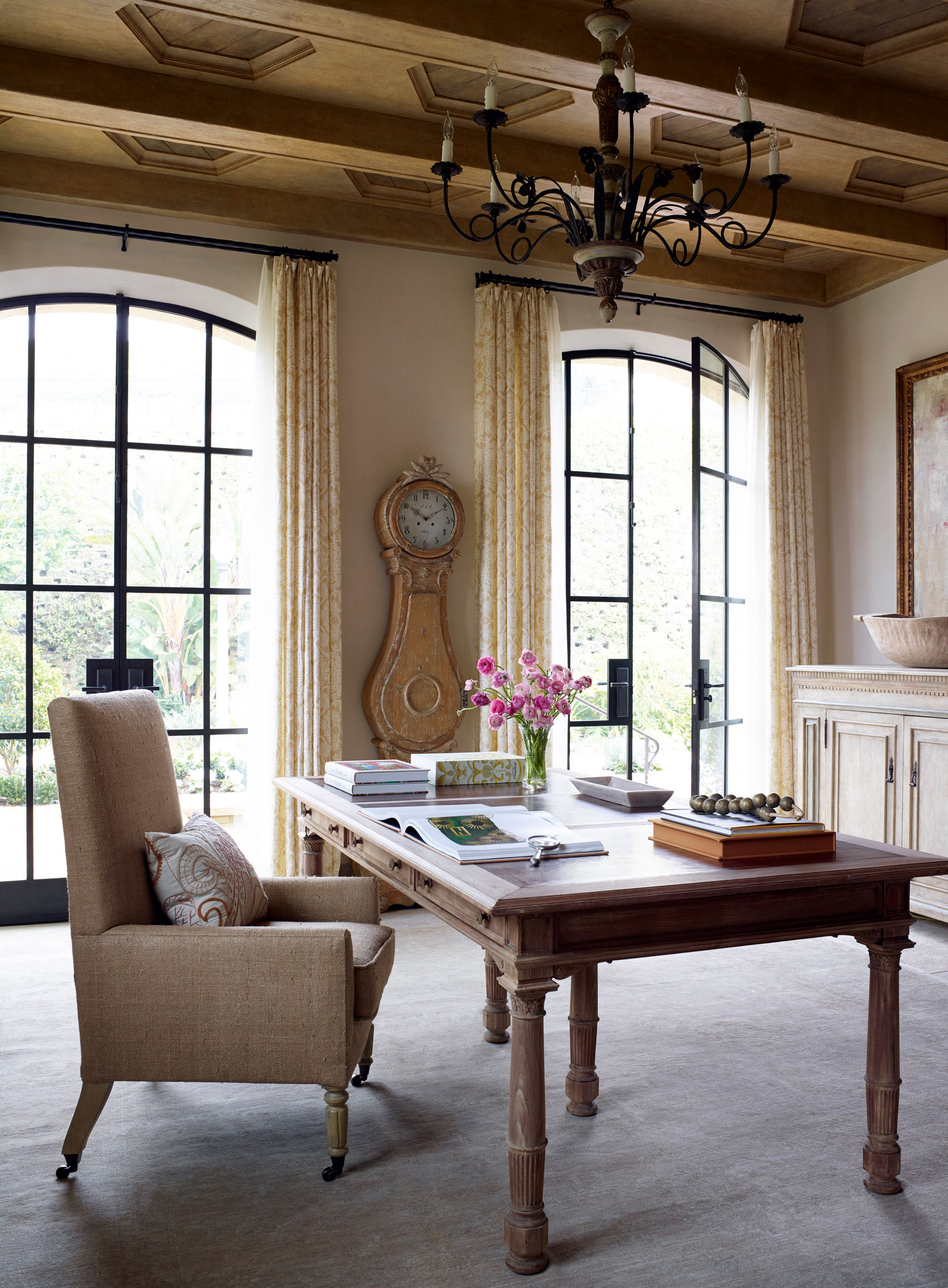
This home office by California-based interior designer Ohara Davies-Gaetano uses beautiful antique pieces to decorate this space with Provençal flair.
'This house is at the front of the house and the French doors open to a beautiful 17th-century fountain set in a small garden. I was mindful of the tonality and textures and selected hues that highlighted the gravel, the old stone and the shades of planting,' says Ohara.
'The desk is an antique that we stripped down to its original oak. Most of the other elements in the room are new, but in textures and tones that reflect the landscape.
No matter what style you choose for your home office, the key to this room is always going to be the right balance between form and function. You, of course, want this space to look lovely and be an inviting space for you to work from, but never at the expense of it not working practically. So always have both these considerations in mind when planning and designing your home office.
Sign up to the Homes & Gardens newsletter
Design expertise in your inbox – from inspiring decorating ideas and beautiful celebrity homes to practical gardening advice and shopping round-ups.

I am the Interior Design News Editor at Homes and Gardens, covering mainly US-based designers and trending news stories. My love for interiors began when I interned in an interior design studio, working on commercial and private spaces. My passion grew while working in production, where I sourced beautiful locations for photoshoots and campaigns. Outside of work, I enjoy collecting antique decor and mid-century furniture for my home.
- Jennifer EbertEditor
You must confirm your public display name before commenting
Please logout and then login again, you will then be prompted to enter your display name.
-
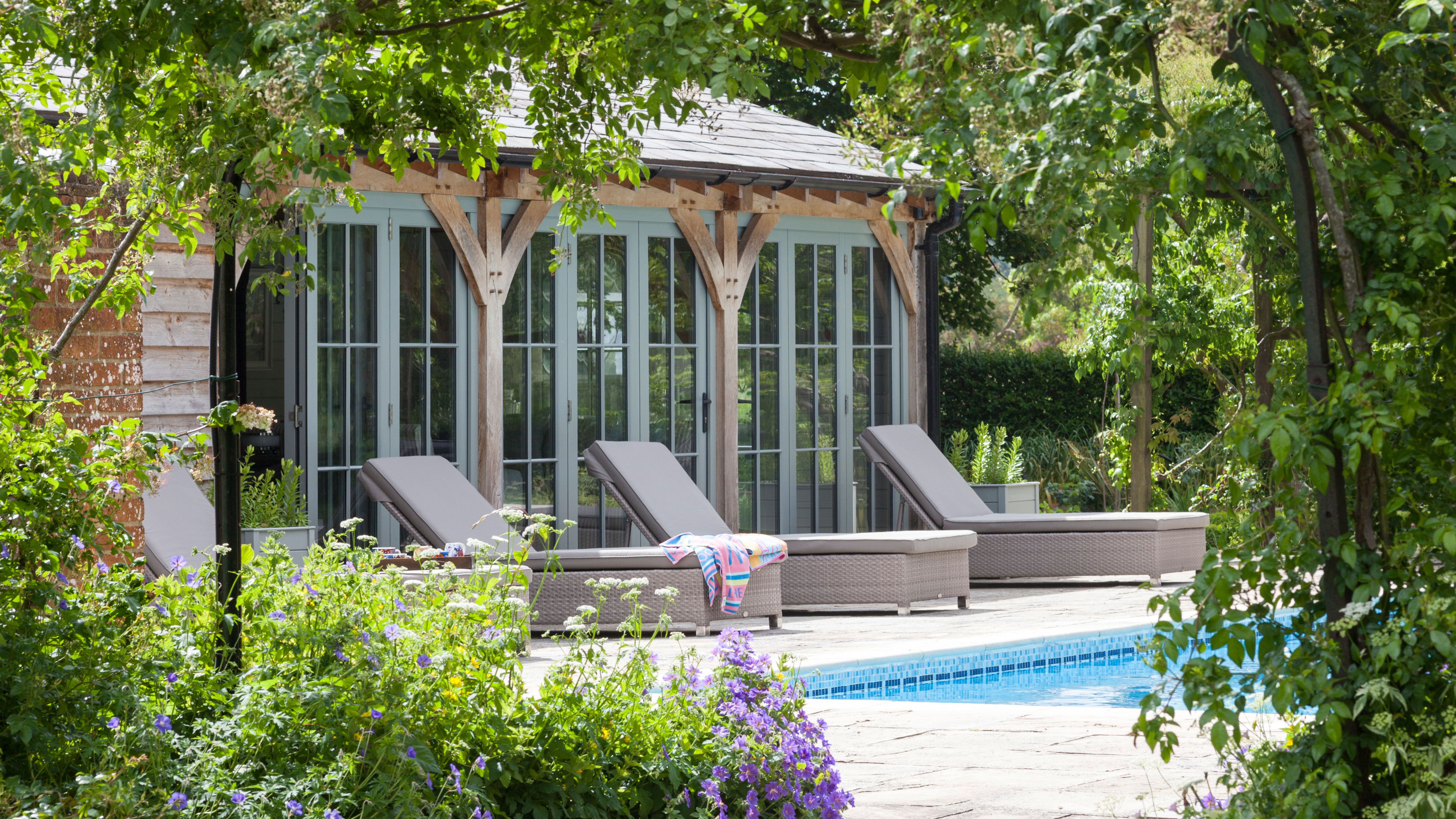 Lidl's brand-new garden lounge chair is so good they've had to limit it to only 2 per a customer – it is low in stock, so you'll need to act fast
Lidl's brand-new garden lounge chair is so good they've had to limit it to only 2 per a customer – it is low in stock, so you'll need to act fastHampton's style is hiding in the Lidl aisles thanks to this budget-friendly recliner
By Jennifer Ebert
-
 Kylie Jenner, Tommy Hilfiger, and Lenny Kravitz transform their homes with prints – the London Original Print Fair Director has a method that makes their look 'accessible and affordable' in your home
Kylie Jenner, Tommy Hilfiger, and Lenny Kravitz transform their homes with prints – the London Original Print Fair Director has a method that makes their look 'accessible and affordable' in your homeCelebrities from the Kardashians to Lenny Kravitz decorate their homes with prints by famous artists, and it's easier to recreate than you might expect
By Sophie Edwards
